Search
Connecting SurveySparrow with HubSpot helps you understand and engage customers while also identifying potential leads through their responses. By integrating customer feedback with your marketing and sales efforts, you make smarter decisions and improve customer relationships.
In this article, we'll map out the setup process of this integration and ways to utilize it fully, including:
1. Log in to your SurveySparrow account and click the Settings icon.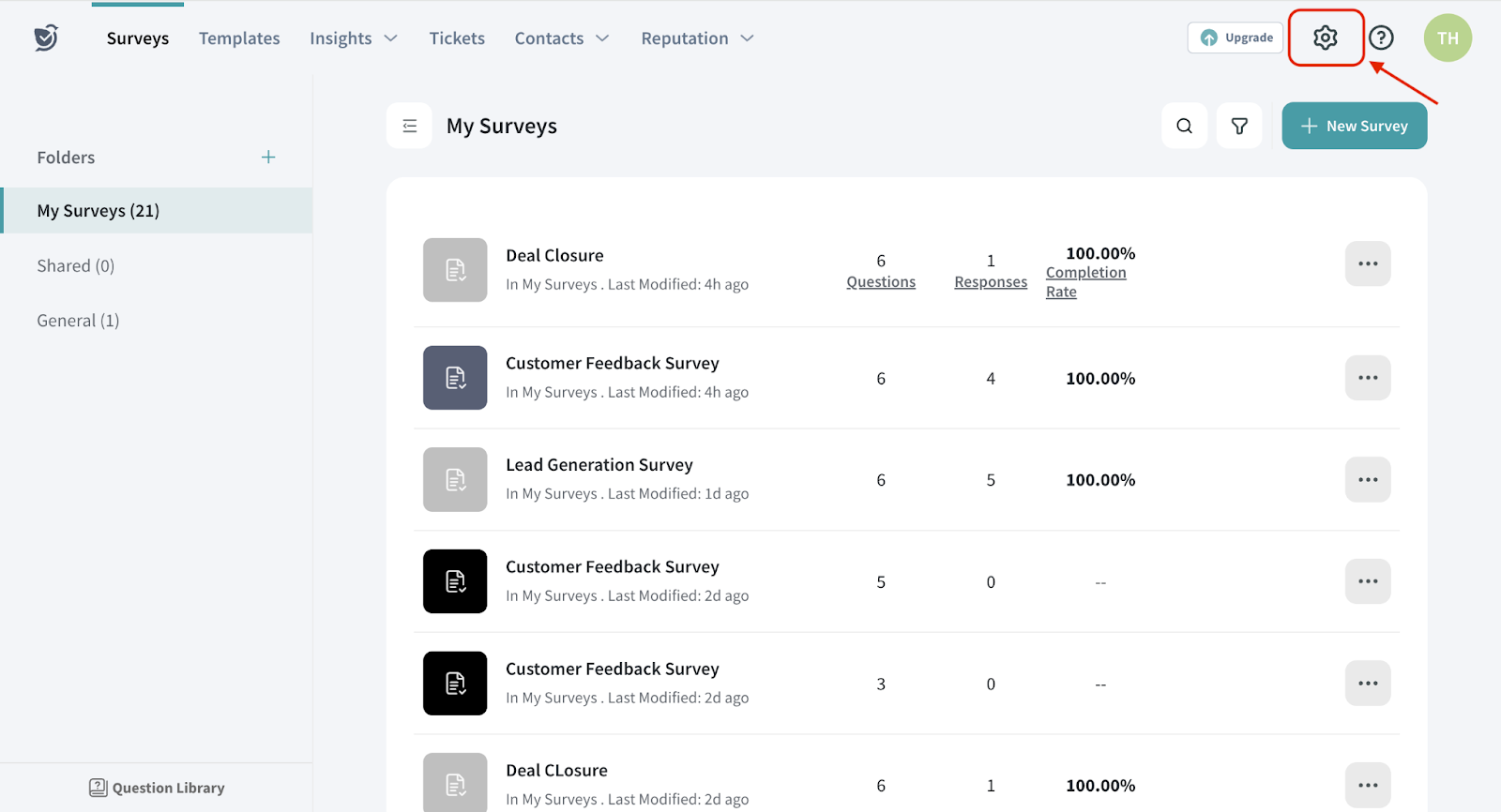
2. Under account settings, navigate to Apps and Integrations.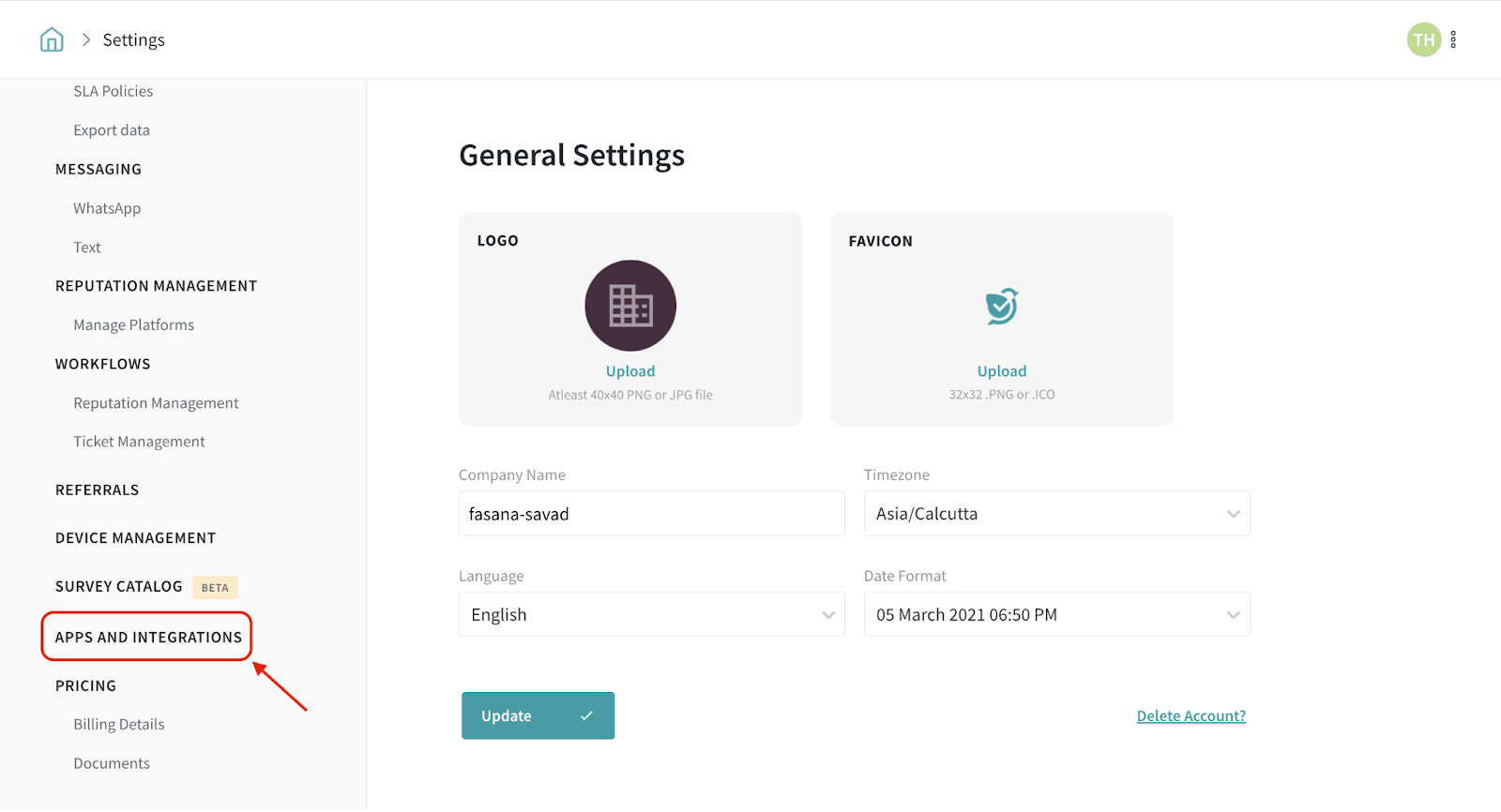
3. From the list of integrations, select HubSpot and turn on the toggle.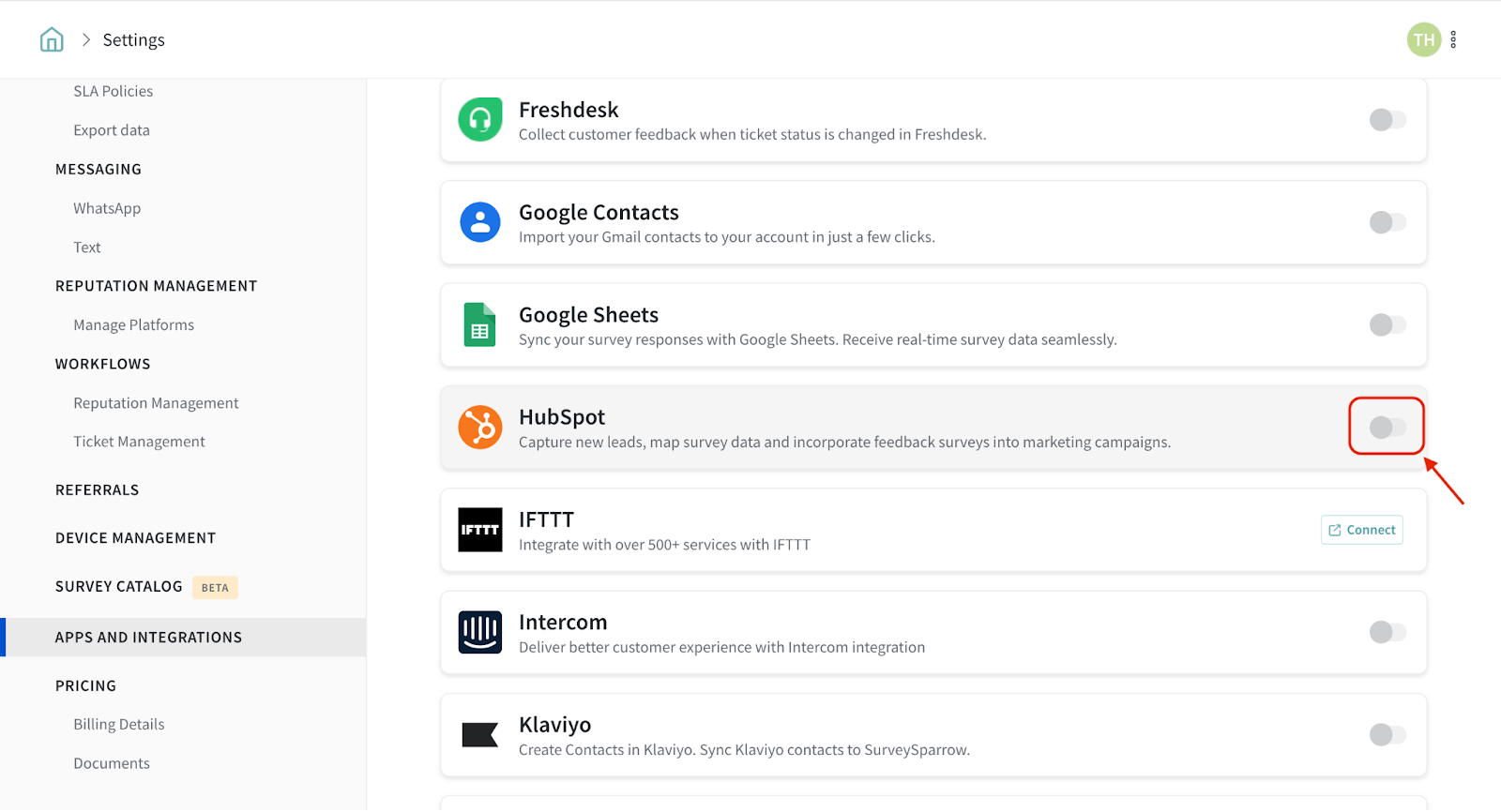
4. Once enabled, you’ll be redirected to the below page. Click Sign in to your HubSpot account.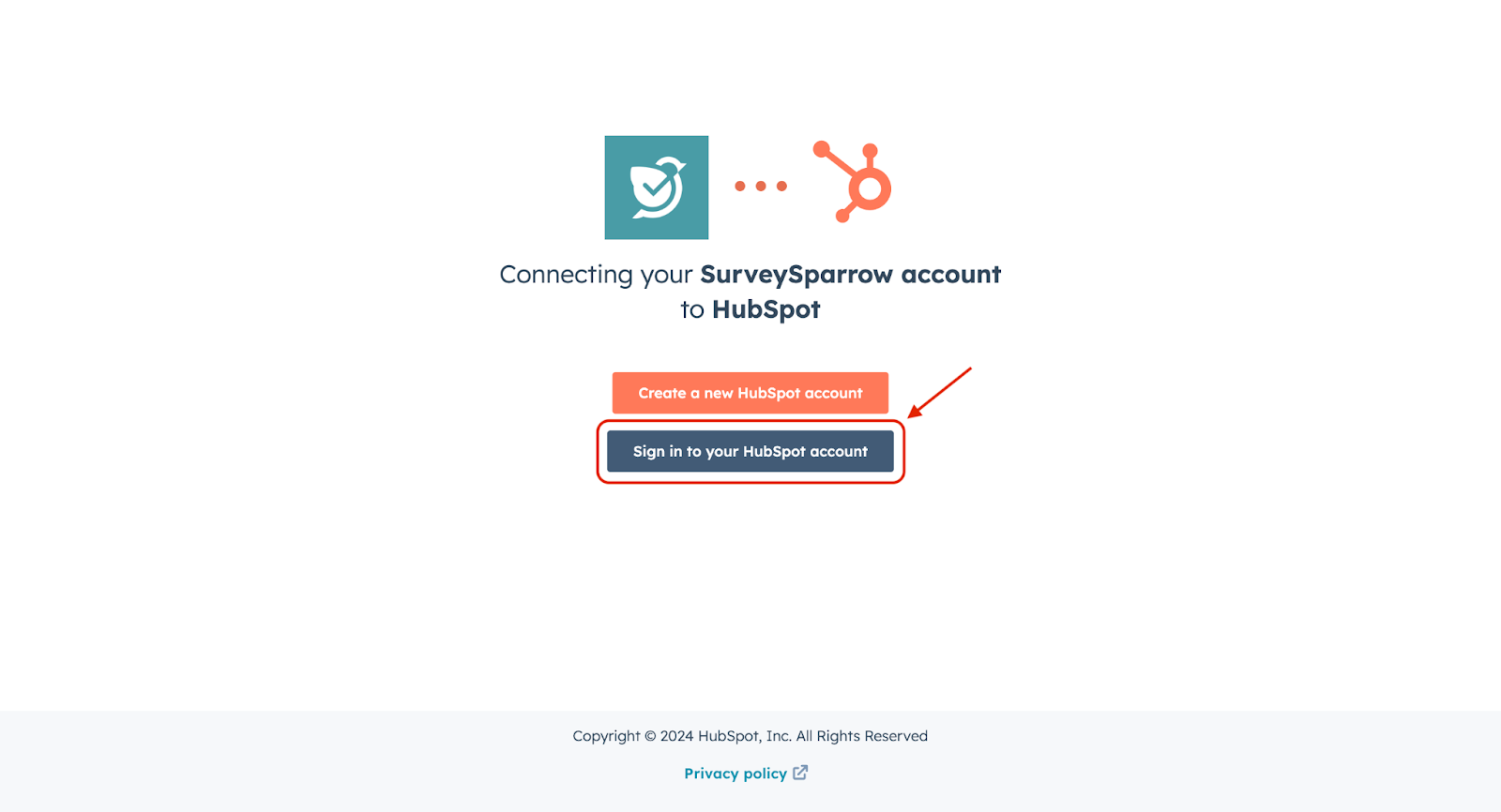
5. Proceed with your HubSpot credentials to complete the integration.
1. Create a Lead Generation Survey or choose one from the templates and customize it.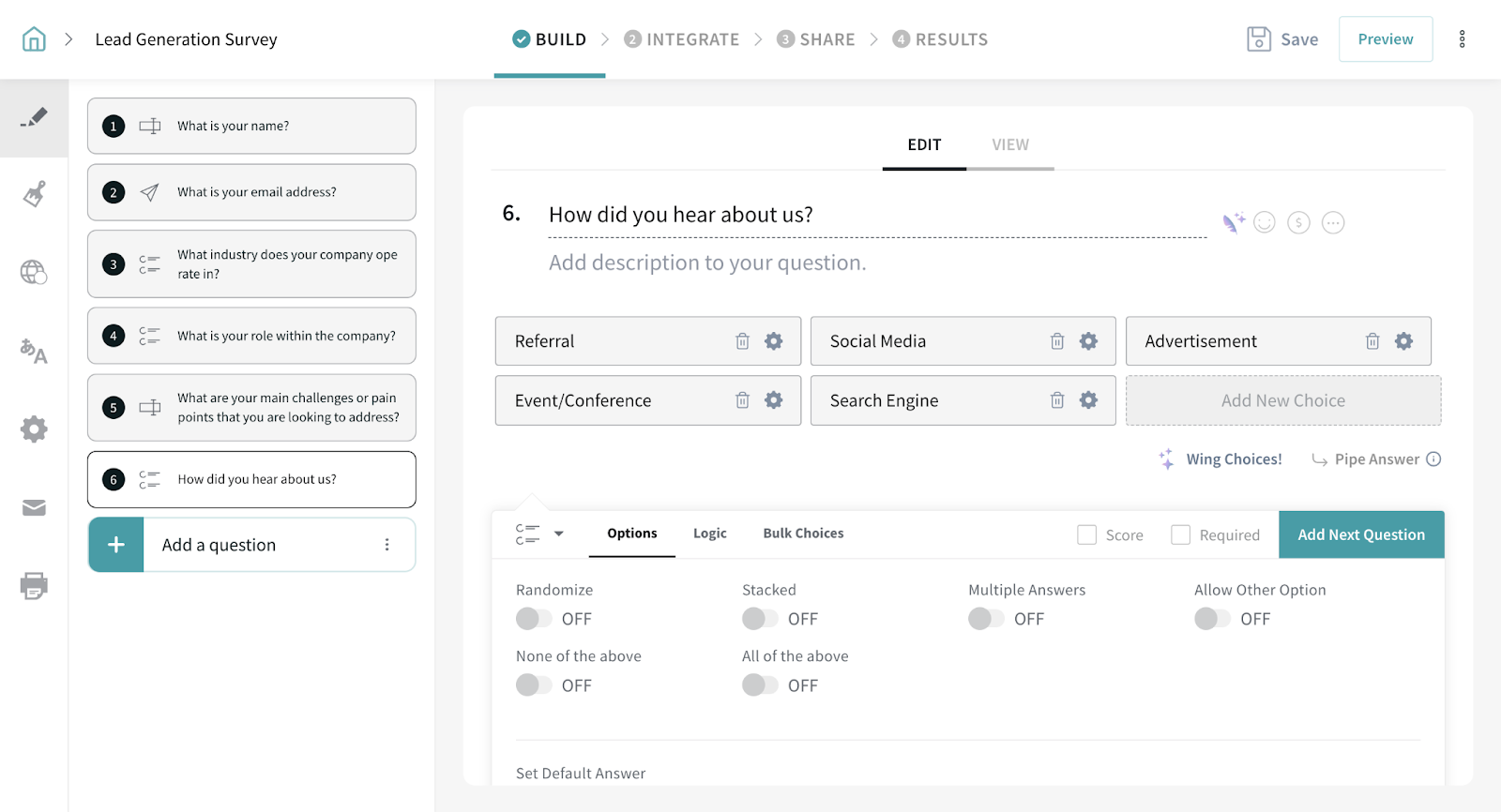
2. In the survey builder, click the Integrate tab.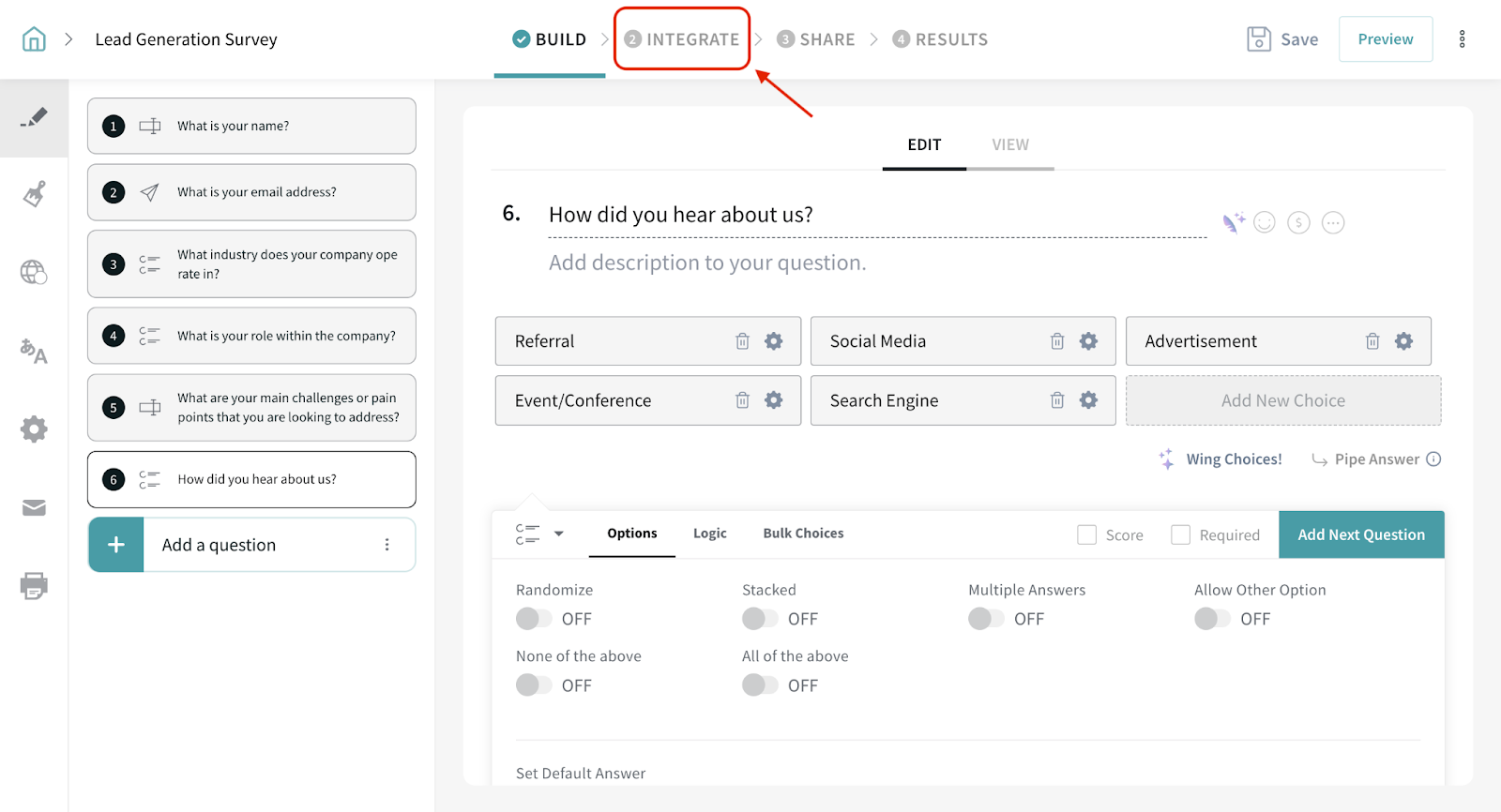
Note: If you are using/creating a CX survey, click Configure.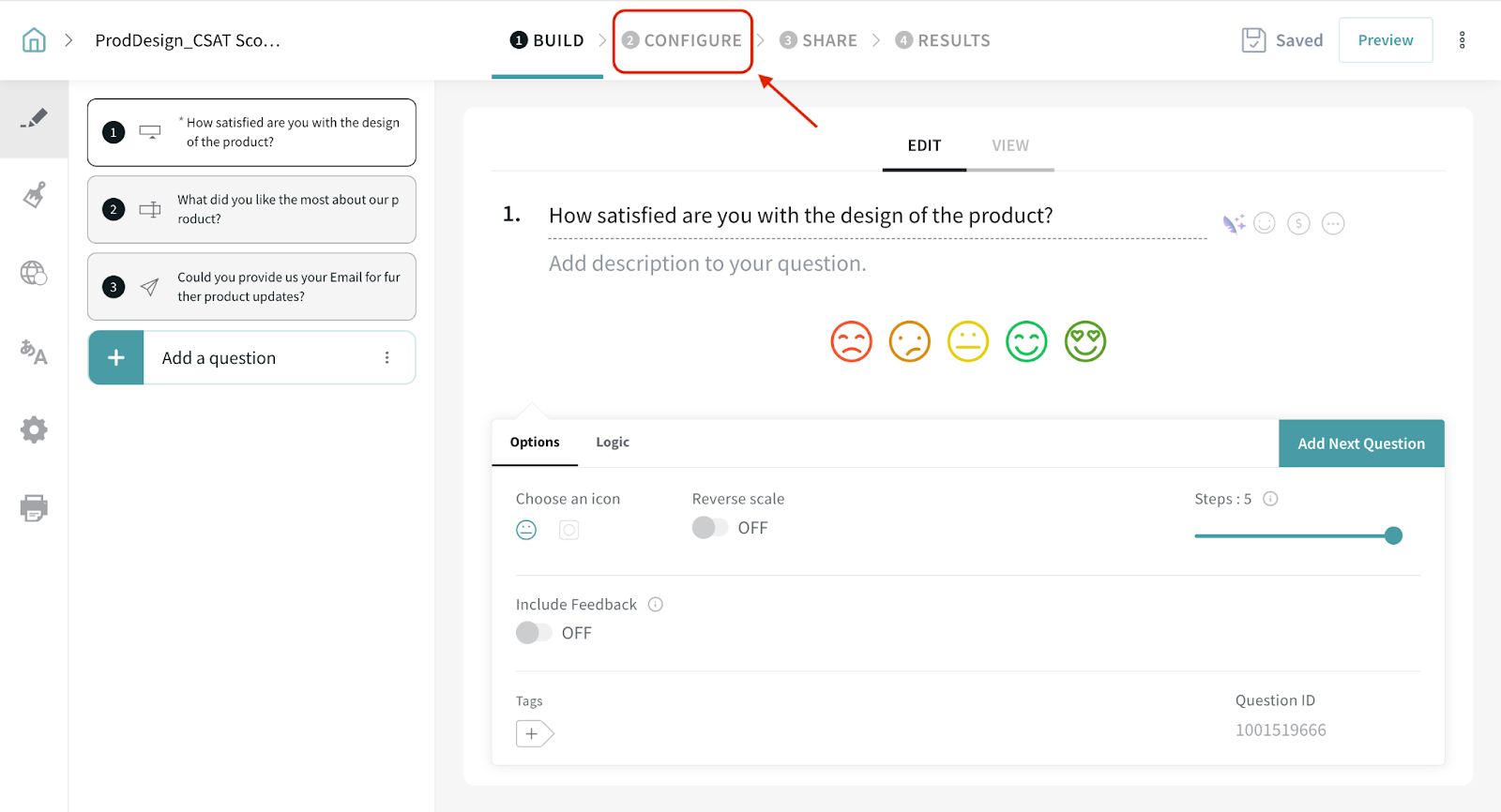
3. From the list of integrations, turn on the toggle for HubSpot.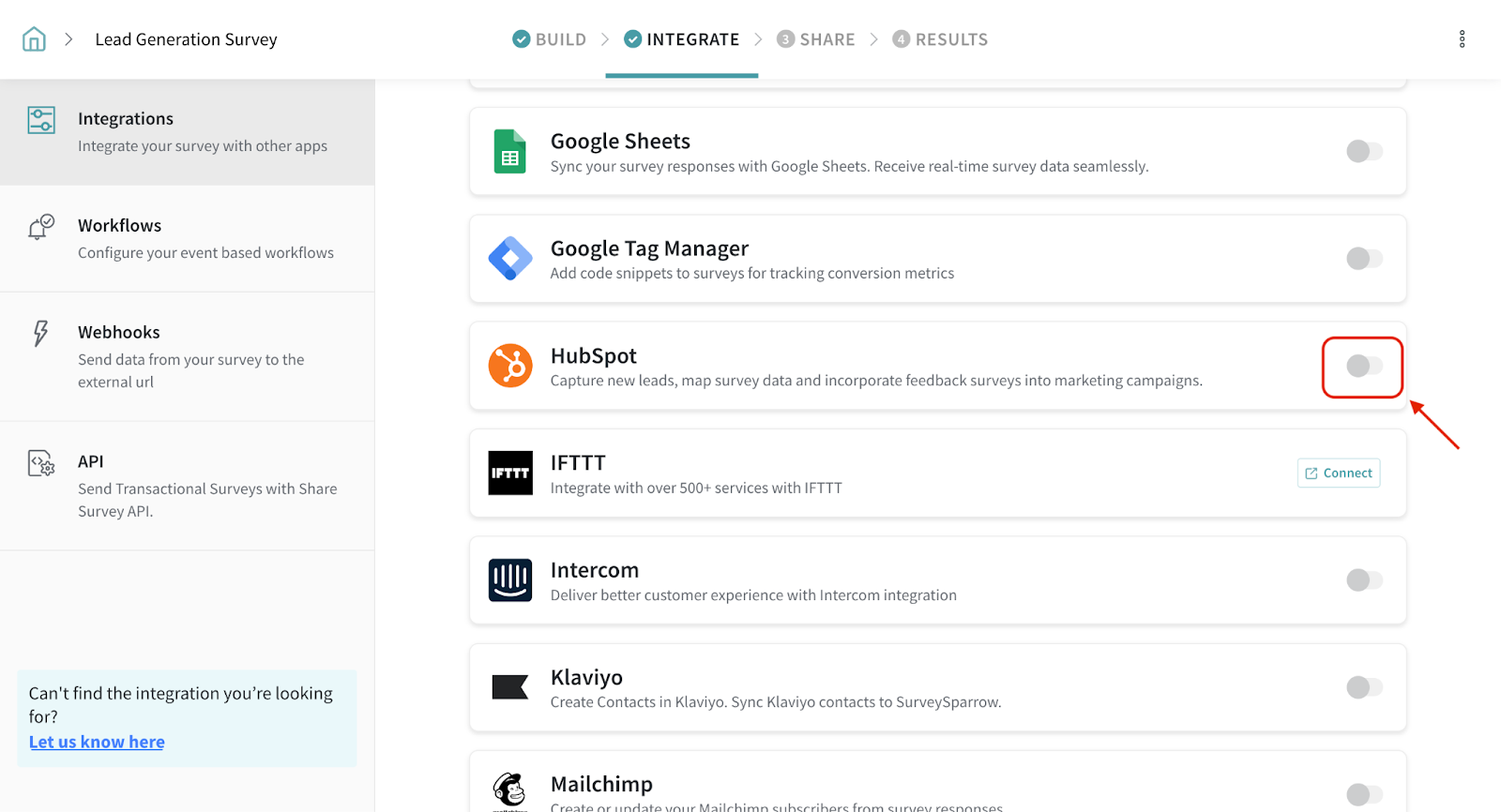
4. Turn on the toggle for Sync survey responses to HubSpot.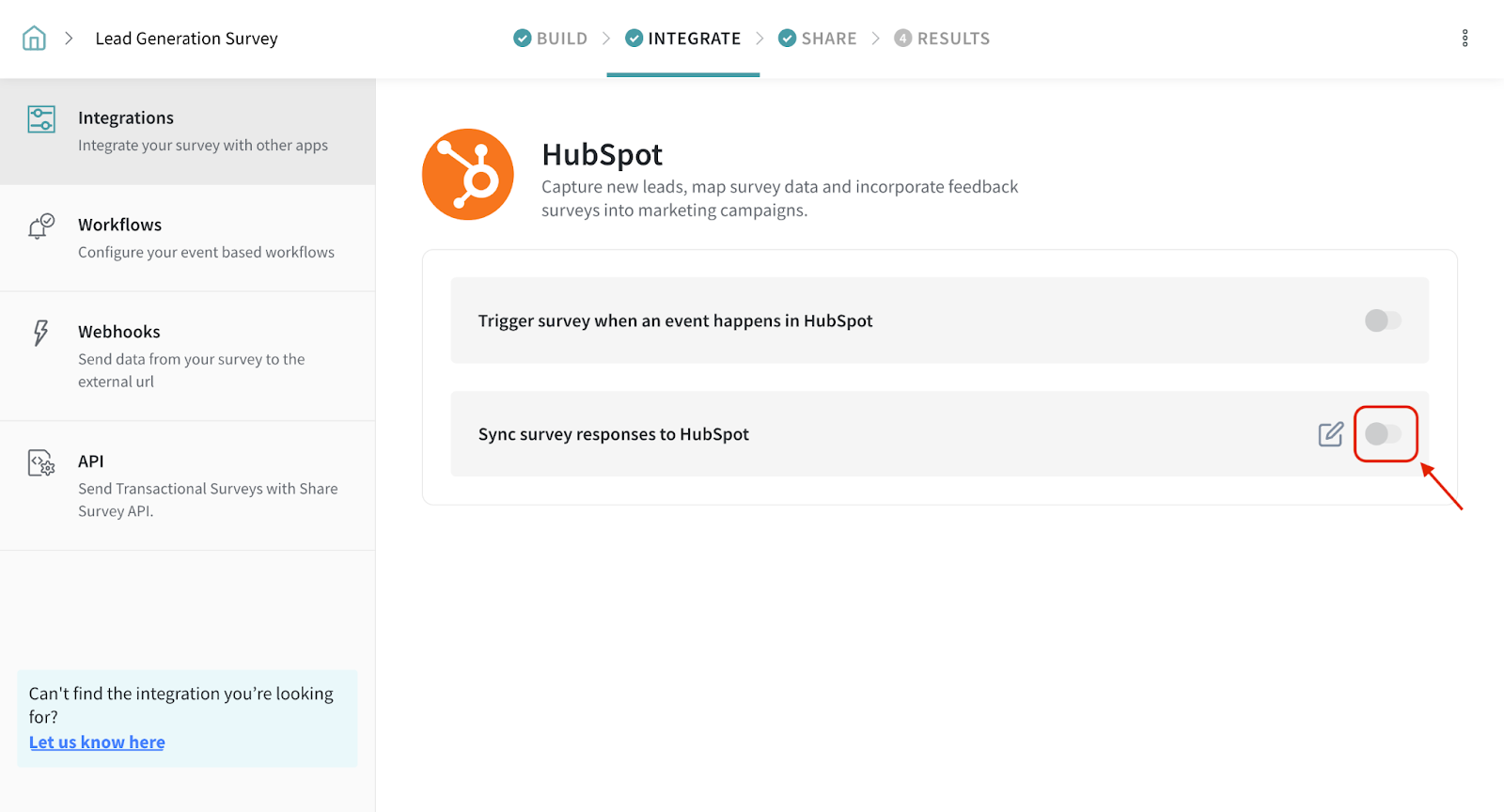
 5. Choose the field type and the corresponding field name.
5. Choose the field type and the corresponding field name.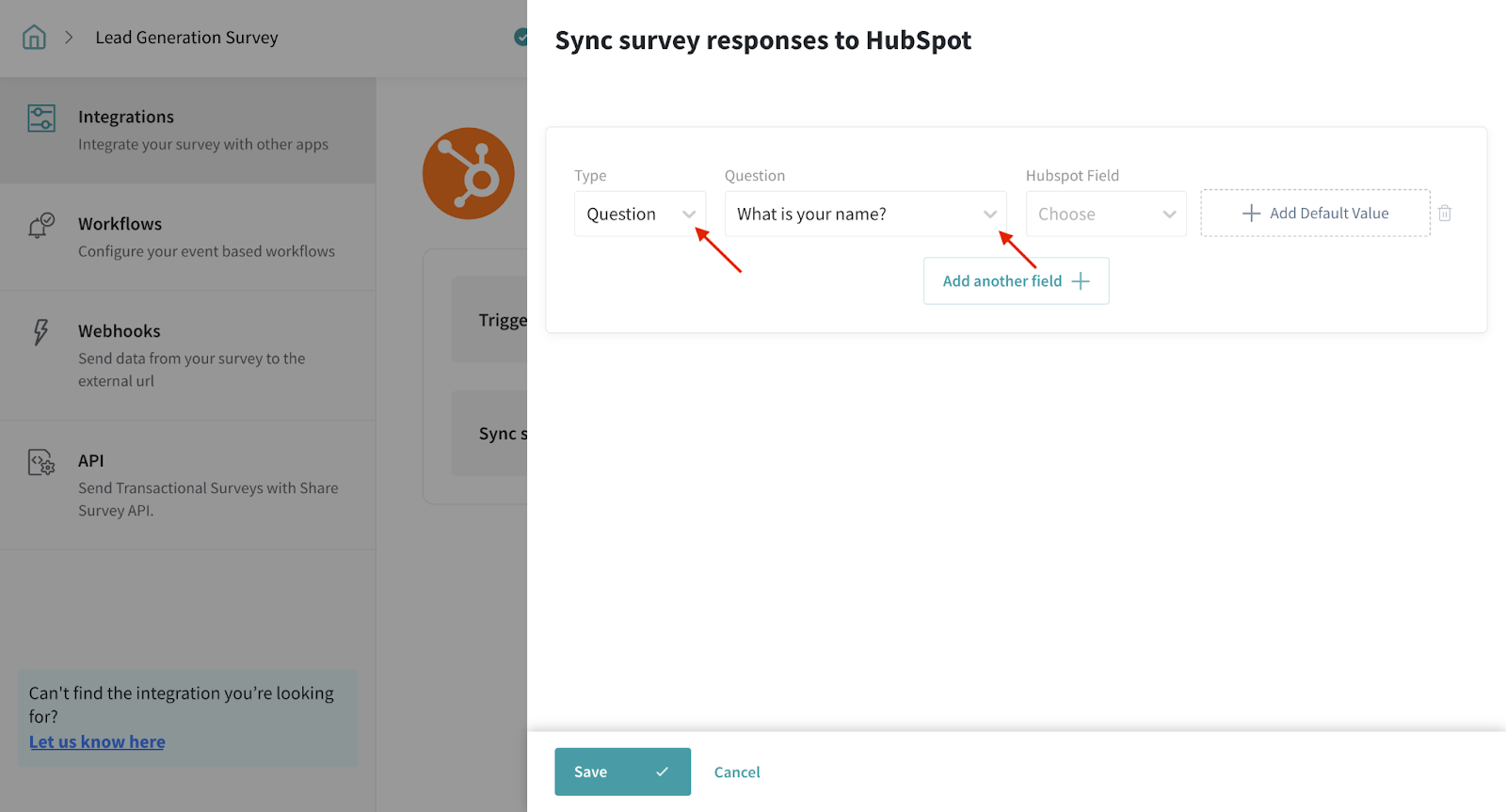
6. Select the HubSpot field to which you want the survey responses to be mapped.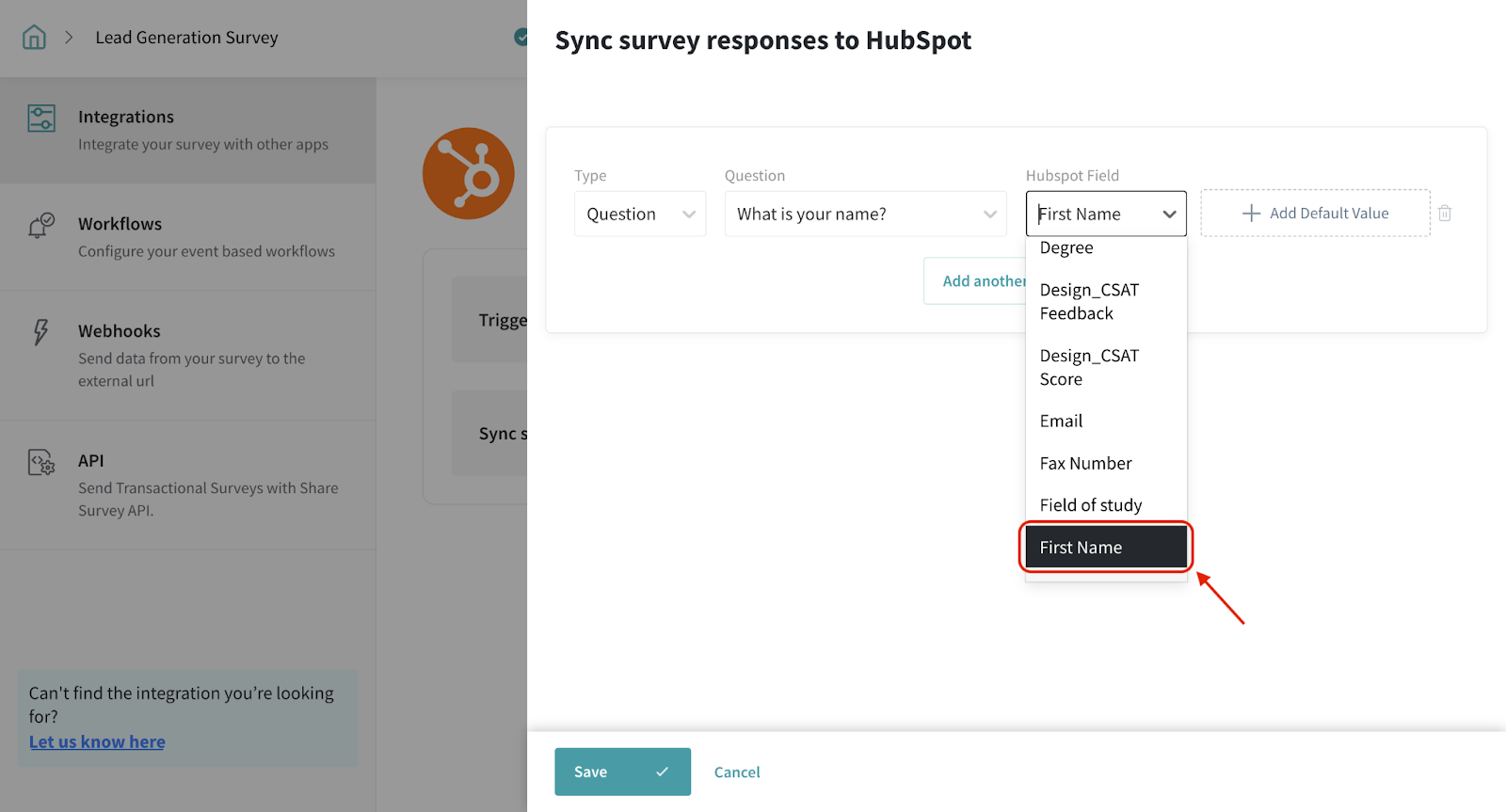 7. If desired, choose to add a default value.
7. If desired, choose to add a default value.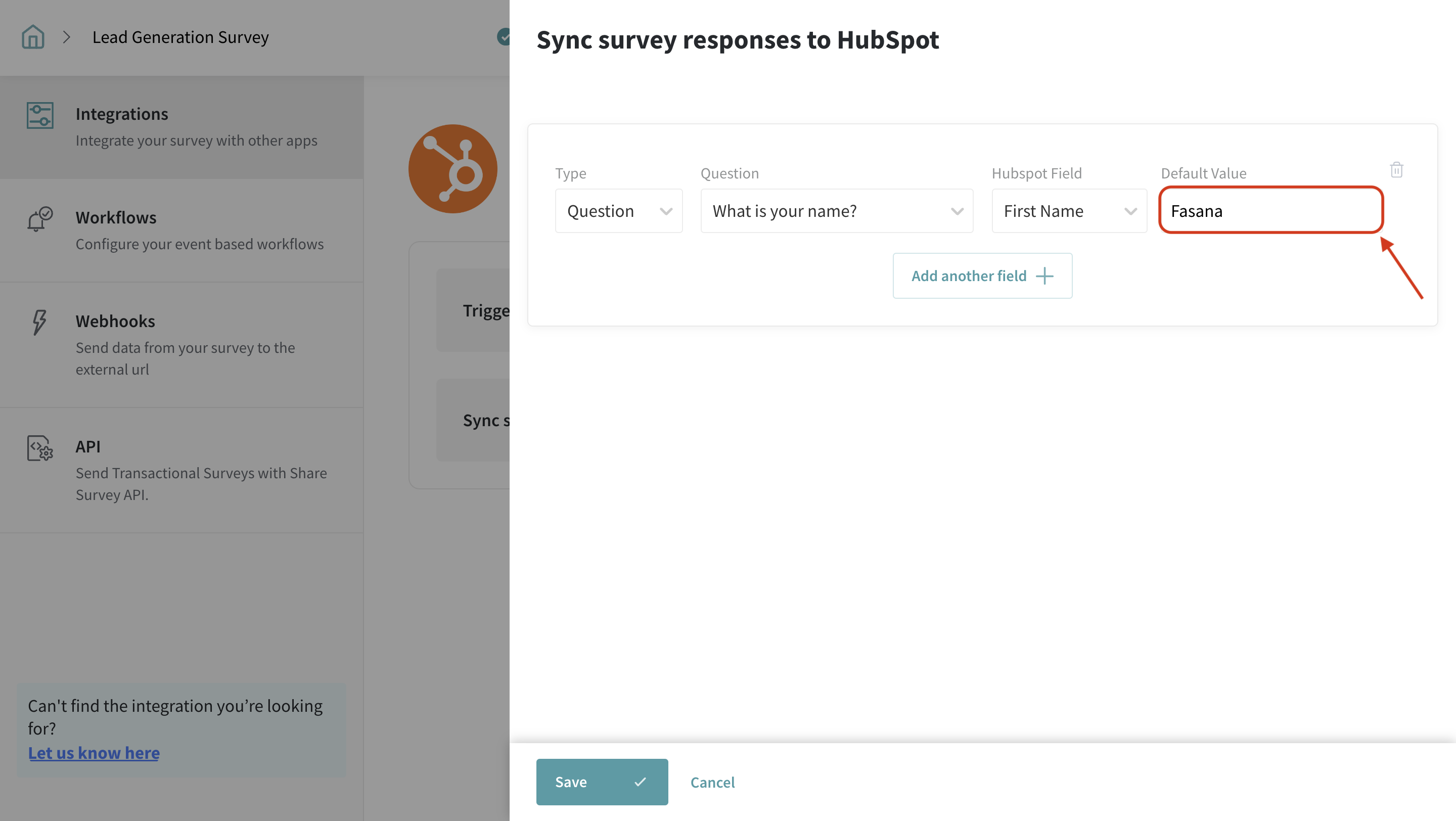
Note: This value will be displayed when the respondent skips the question.
8. You can choose to delete the field by clicking on the delete icon.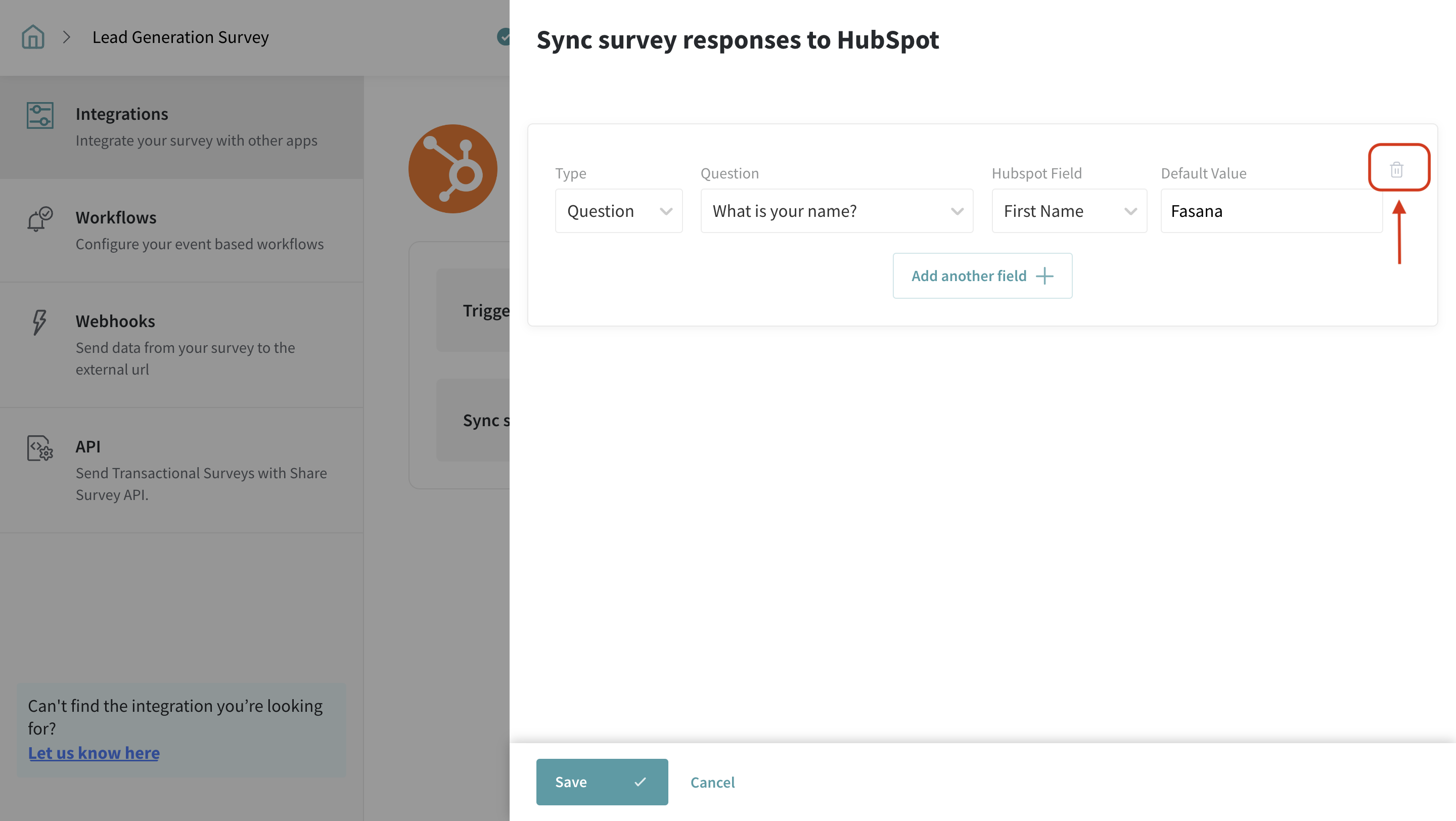
9. Click Add another field to add more data to HubSpot fields.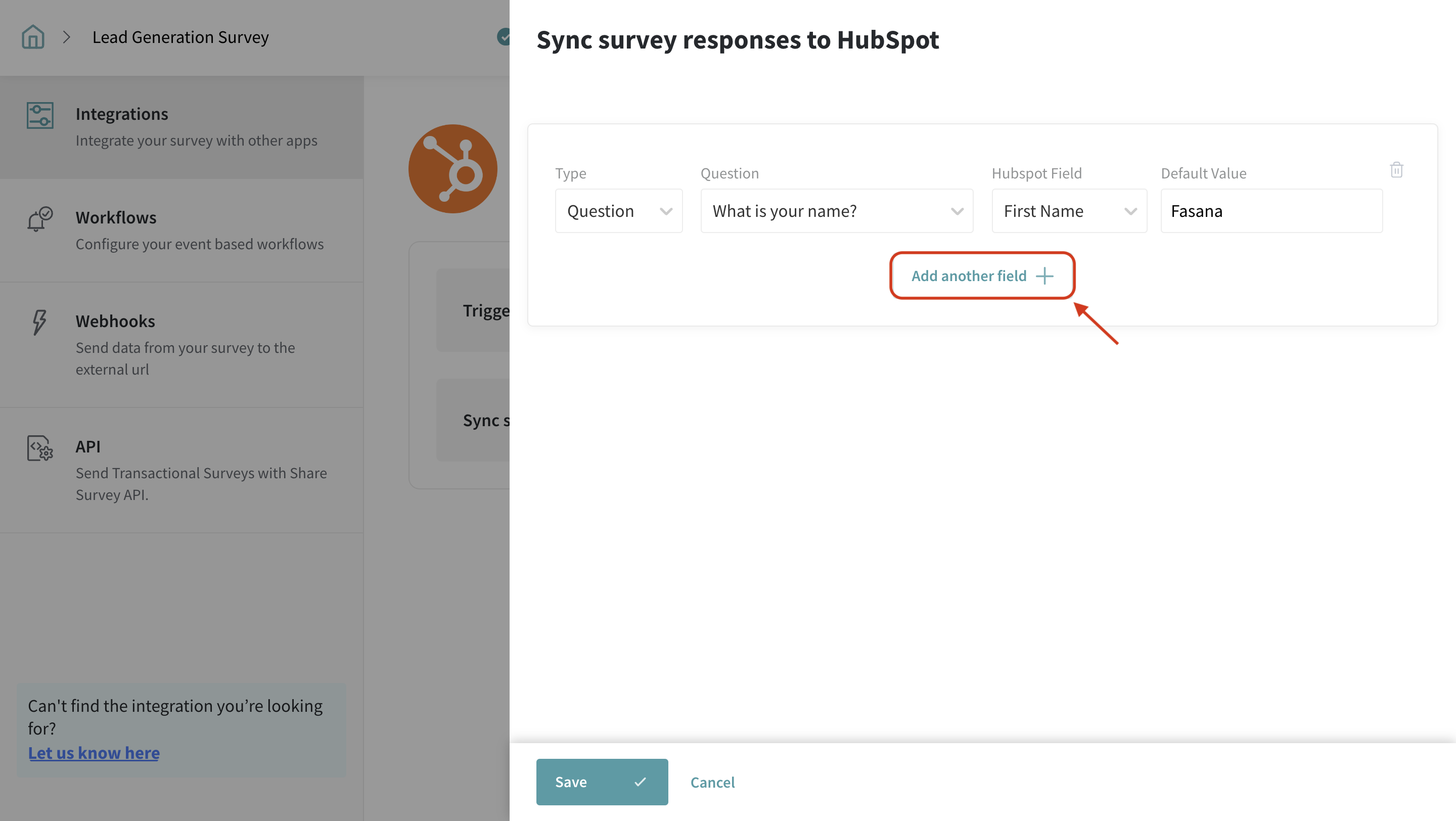
Note: Ensure you have email in one of your fields as it is mandatory to be mapped in HubSpot.
10. Click Save to complete the process.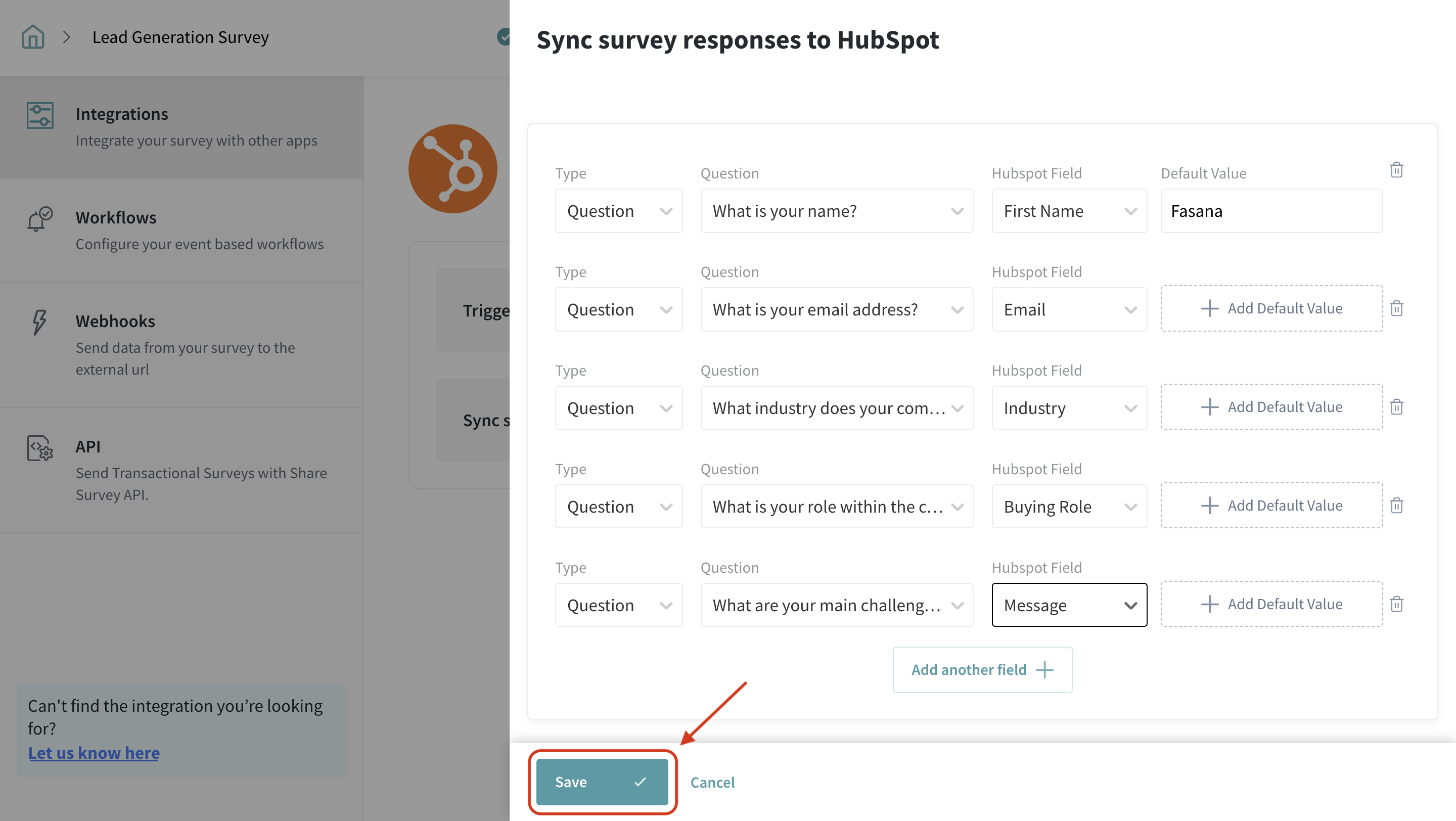
Once saved, the toggle will turn on automatically.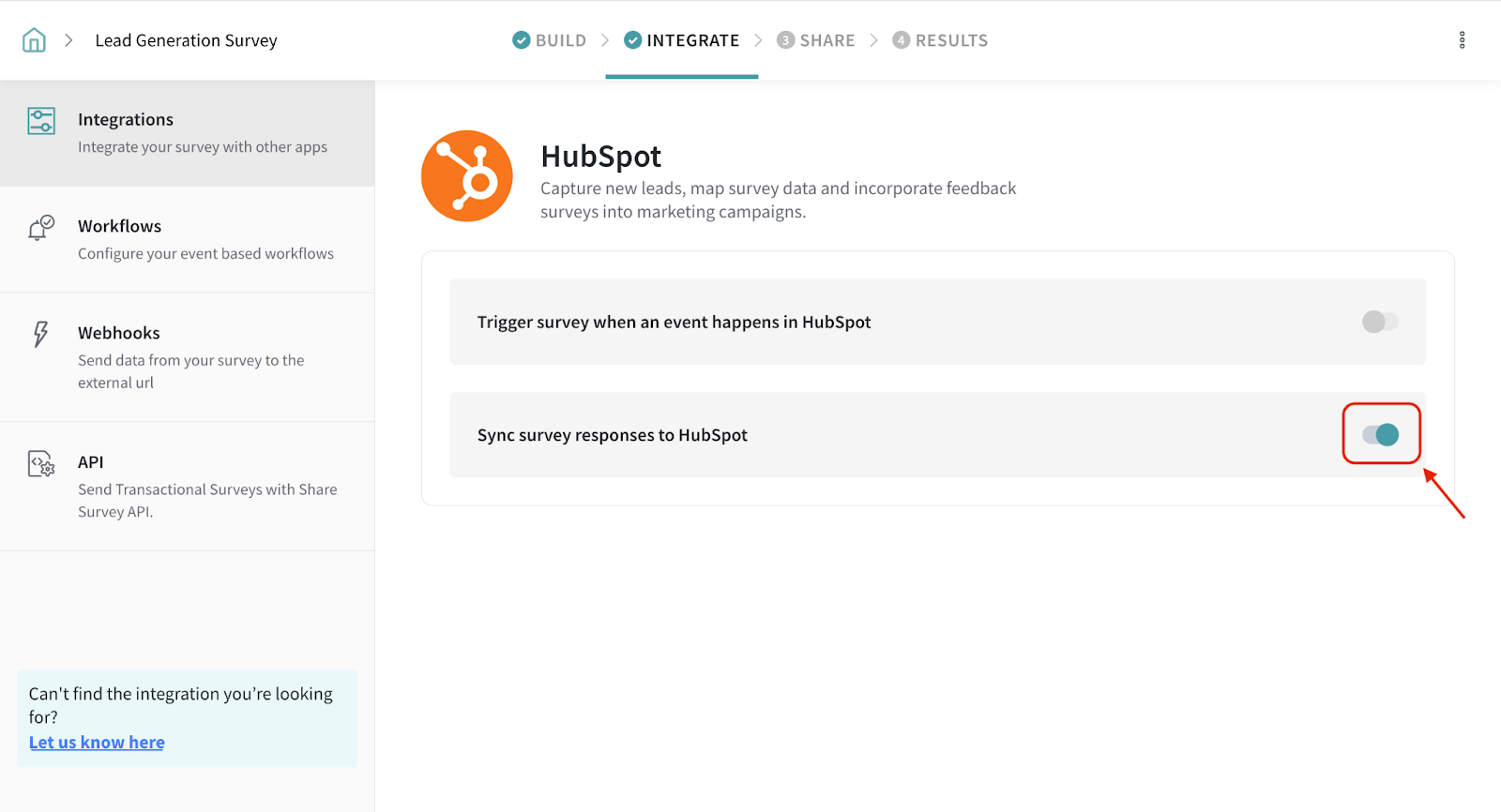
As and when the user completes the Lead Generation Survey, the responses will get mapped to the corresponding HubSpot fields.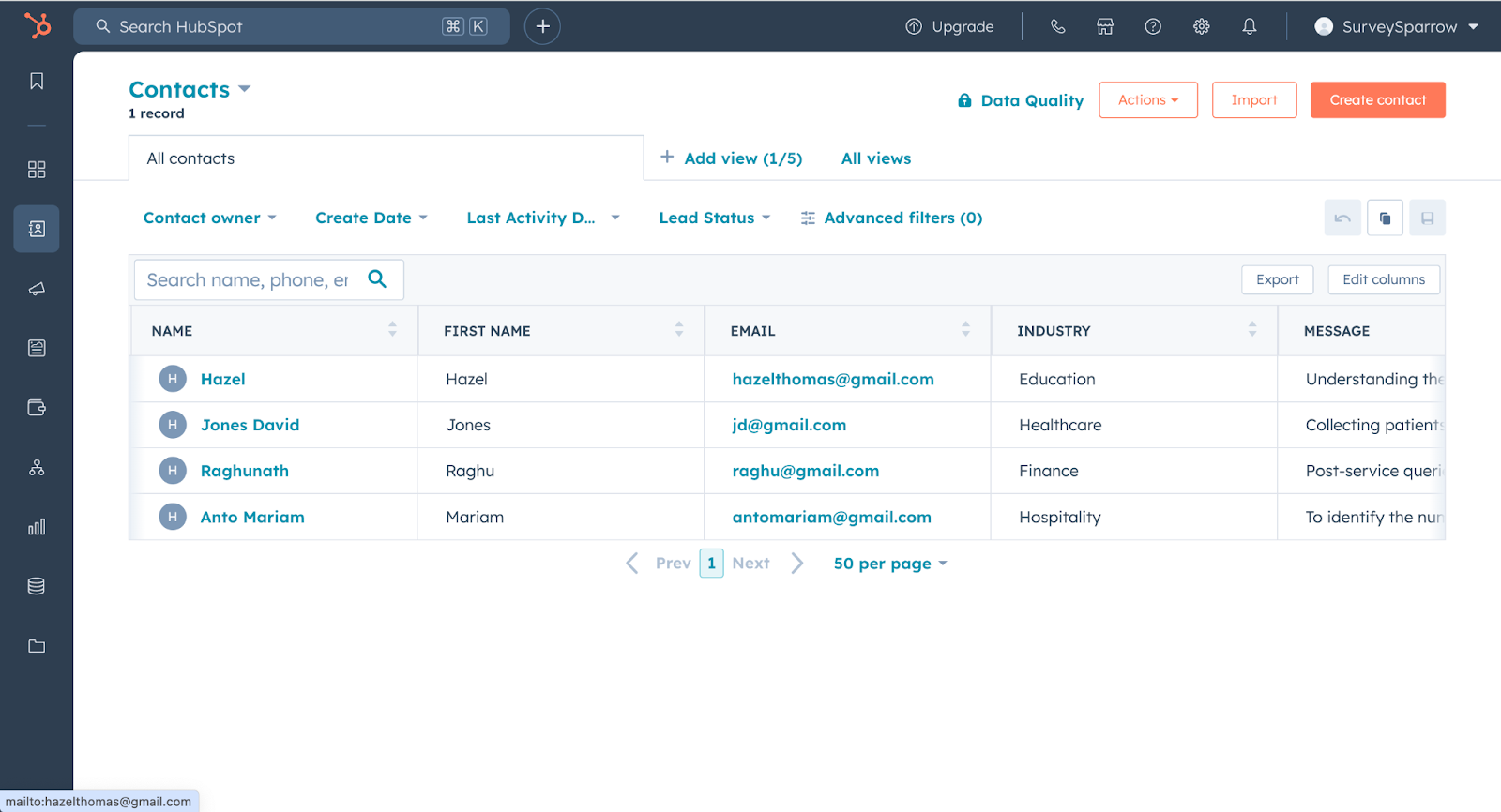
Note: Ensure you add surveysparrow.com to your Additional site domains on HubSpot
Not only can you send the data to HubSpot but also you’ll be able to trigger surveys based on specific events with this HubSpot integration.
For example, you can automatically send a survey when a new contact is created or a deal is closed.
1. Navigate to the integration section of your survey.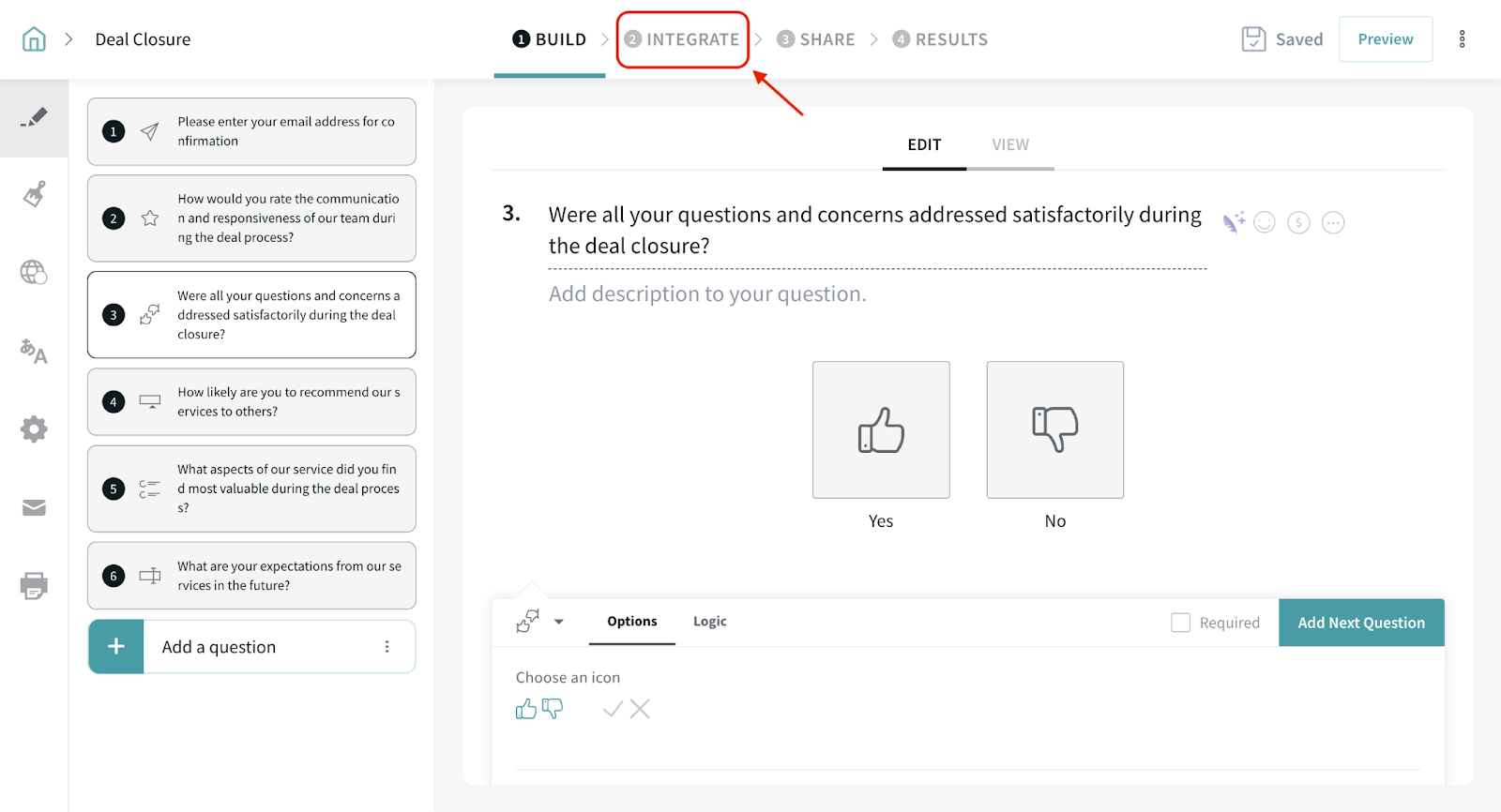
2. From the list of integrations, turn on the HubSpot toggle.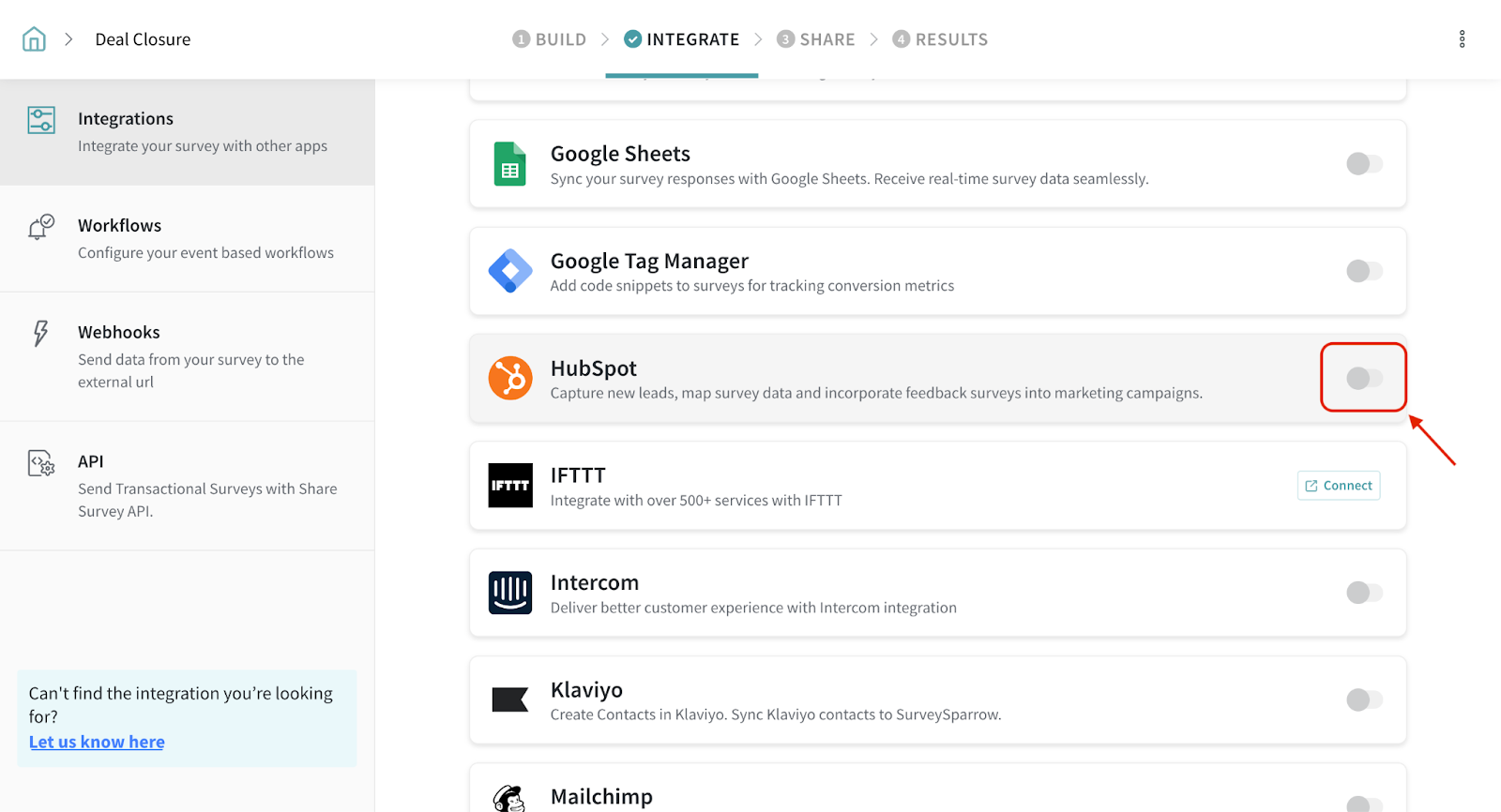
3. Turn on the toggle for Trigger survey when an event happens in HubSpot.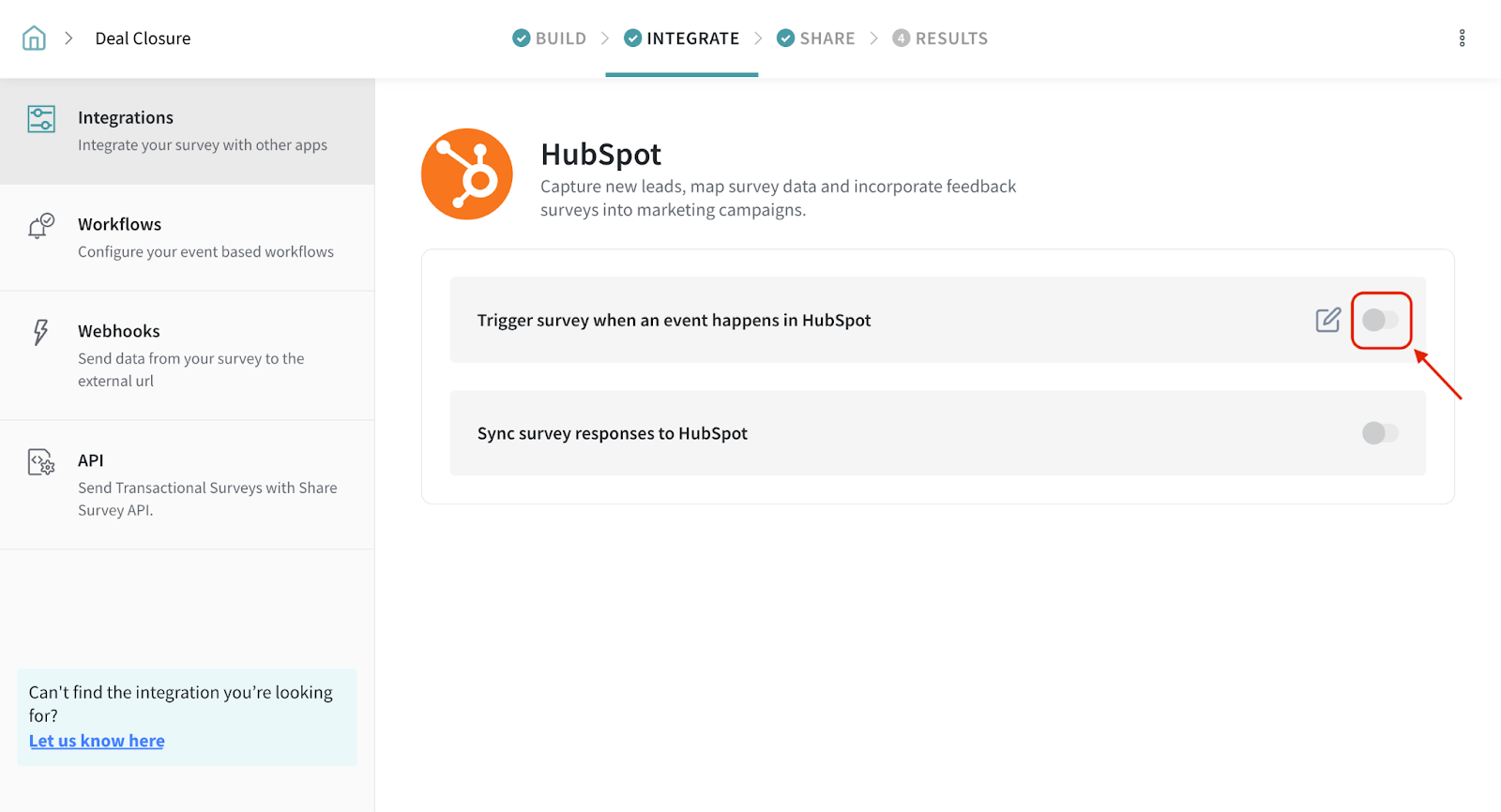
4. Choose an event to trigger the survey.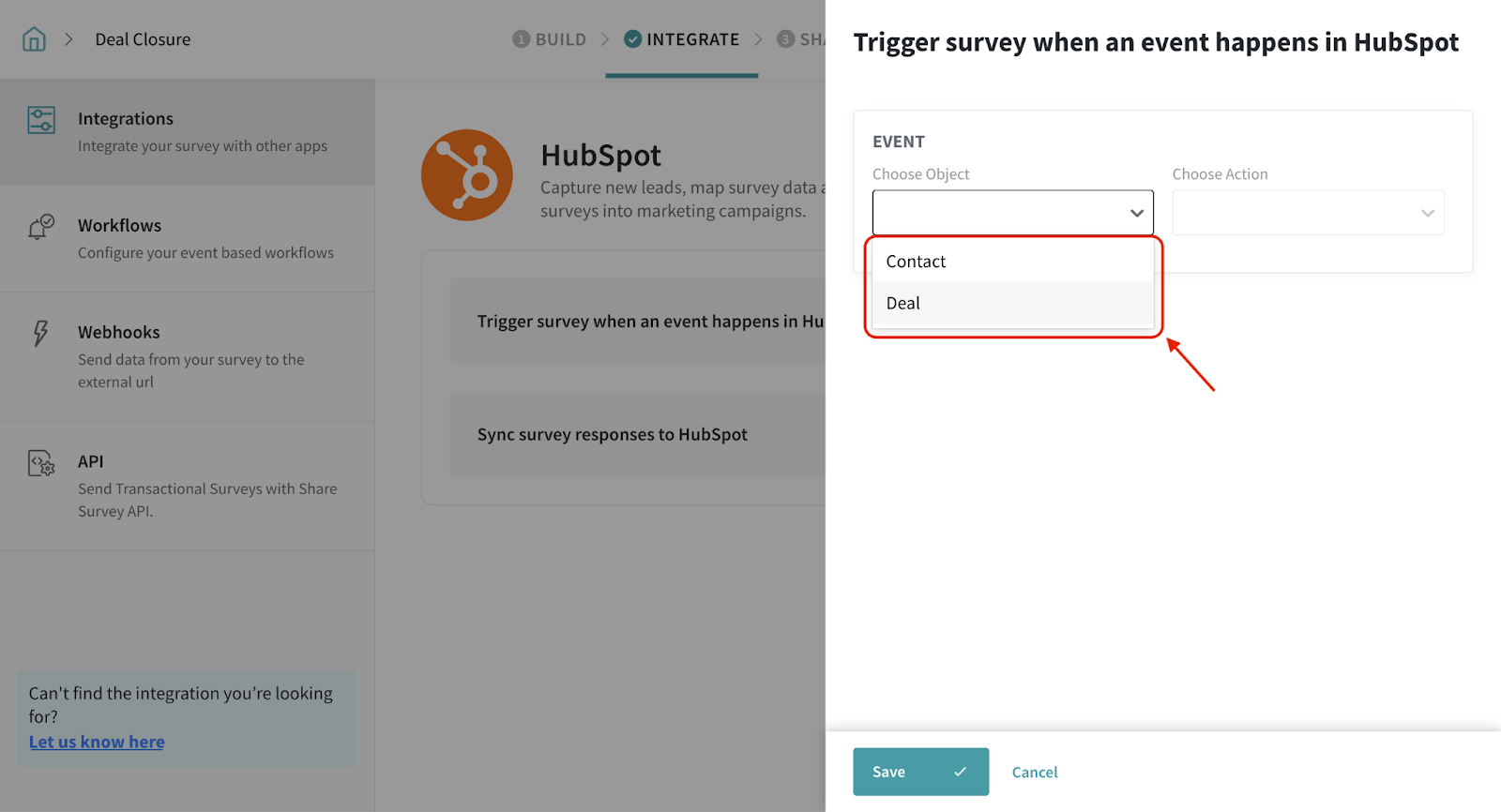
5. Select the action associated with the event.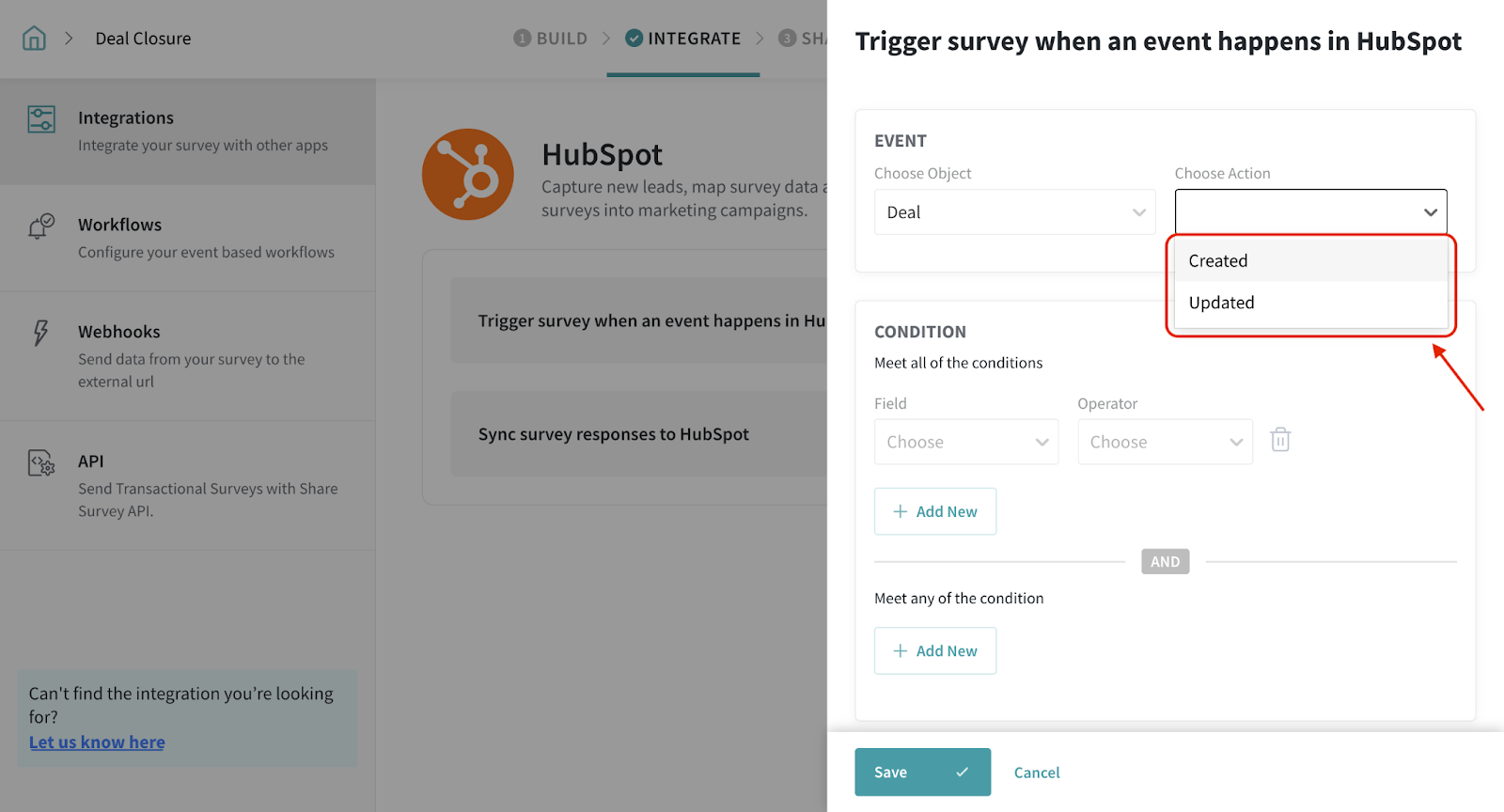
6. Set up conditions to trigger the survey. You can set the conditions in two ways.
a. Meet all of the conditions: All conditions set here must be met for the survey to trigger.
Click the Field dropdown and select the relevant field.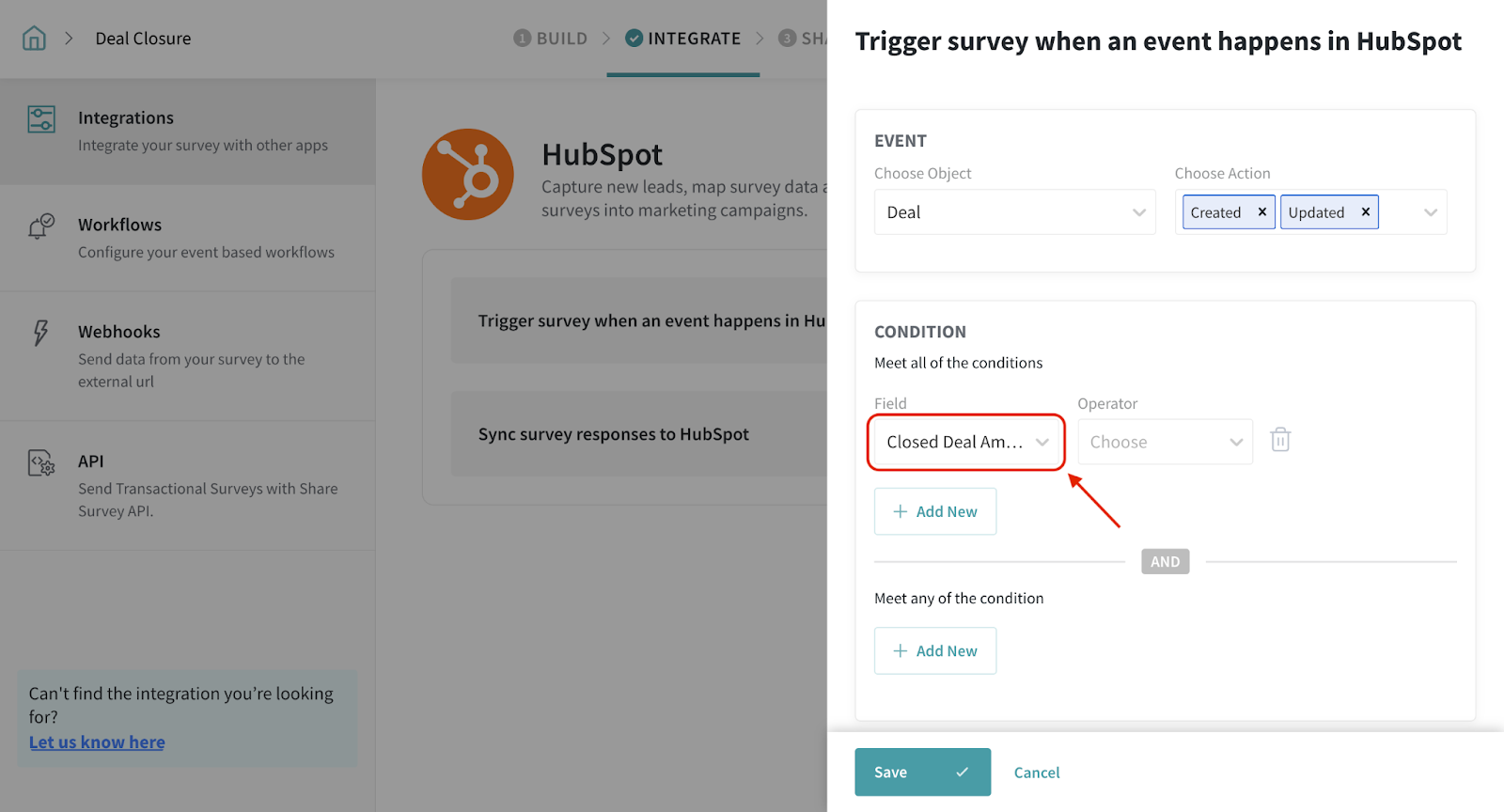
Choose an Operator from the dropdown.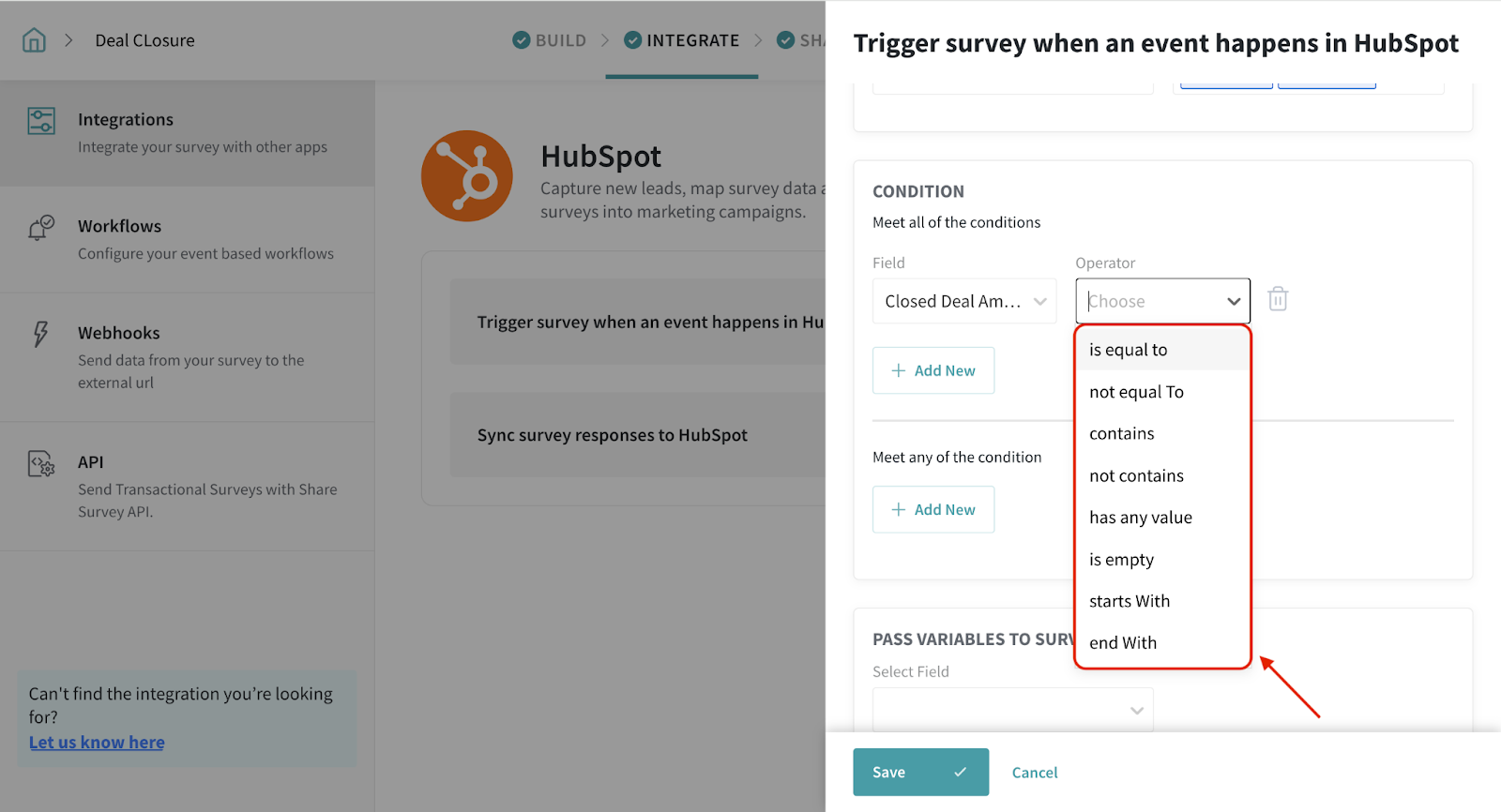
Enter the Value for the condition.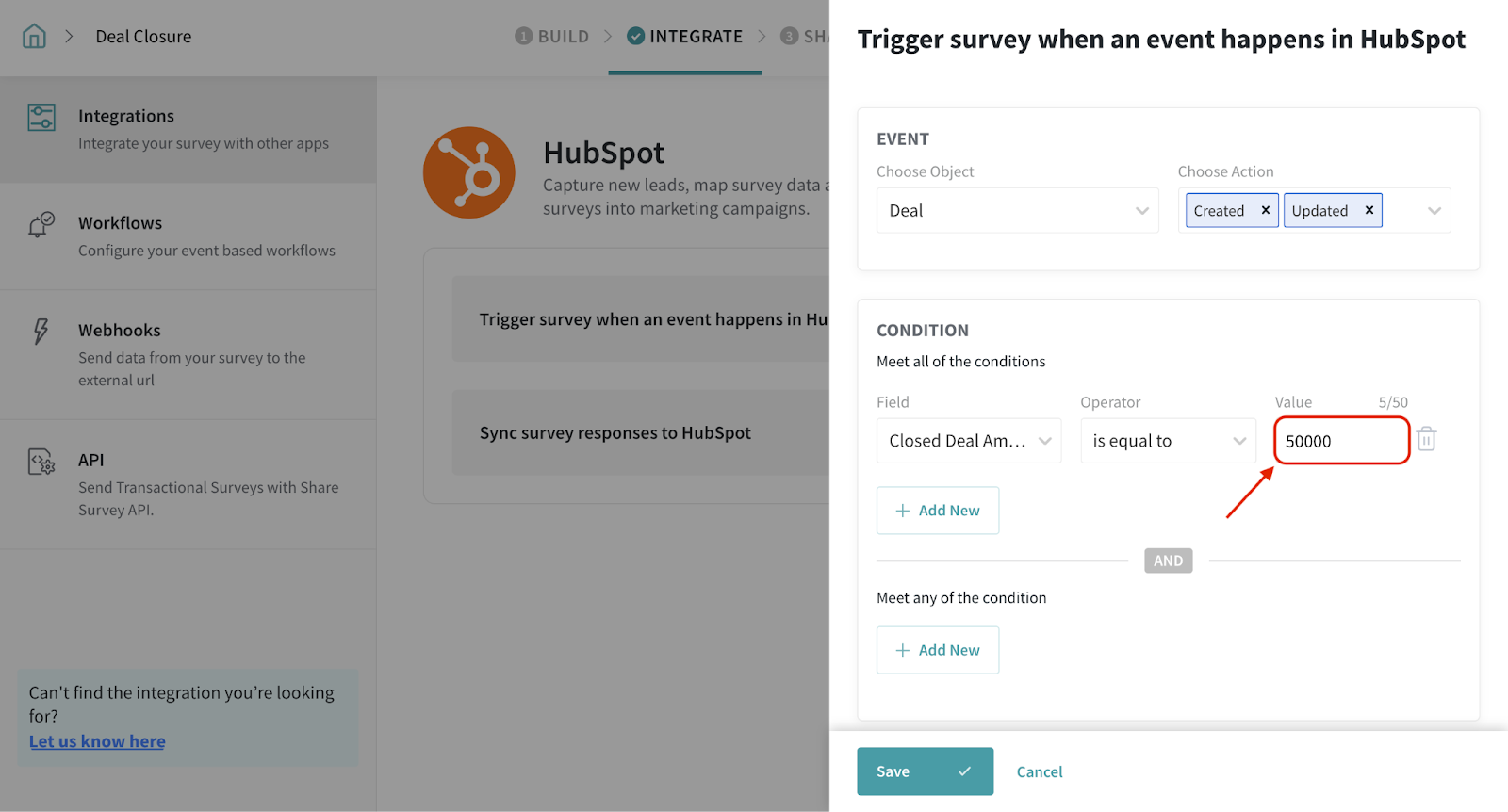
Click Add New to include additional conditions if needed.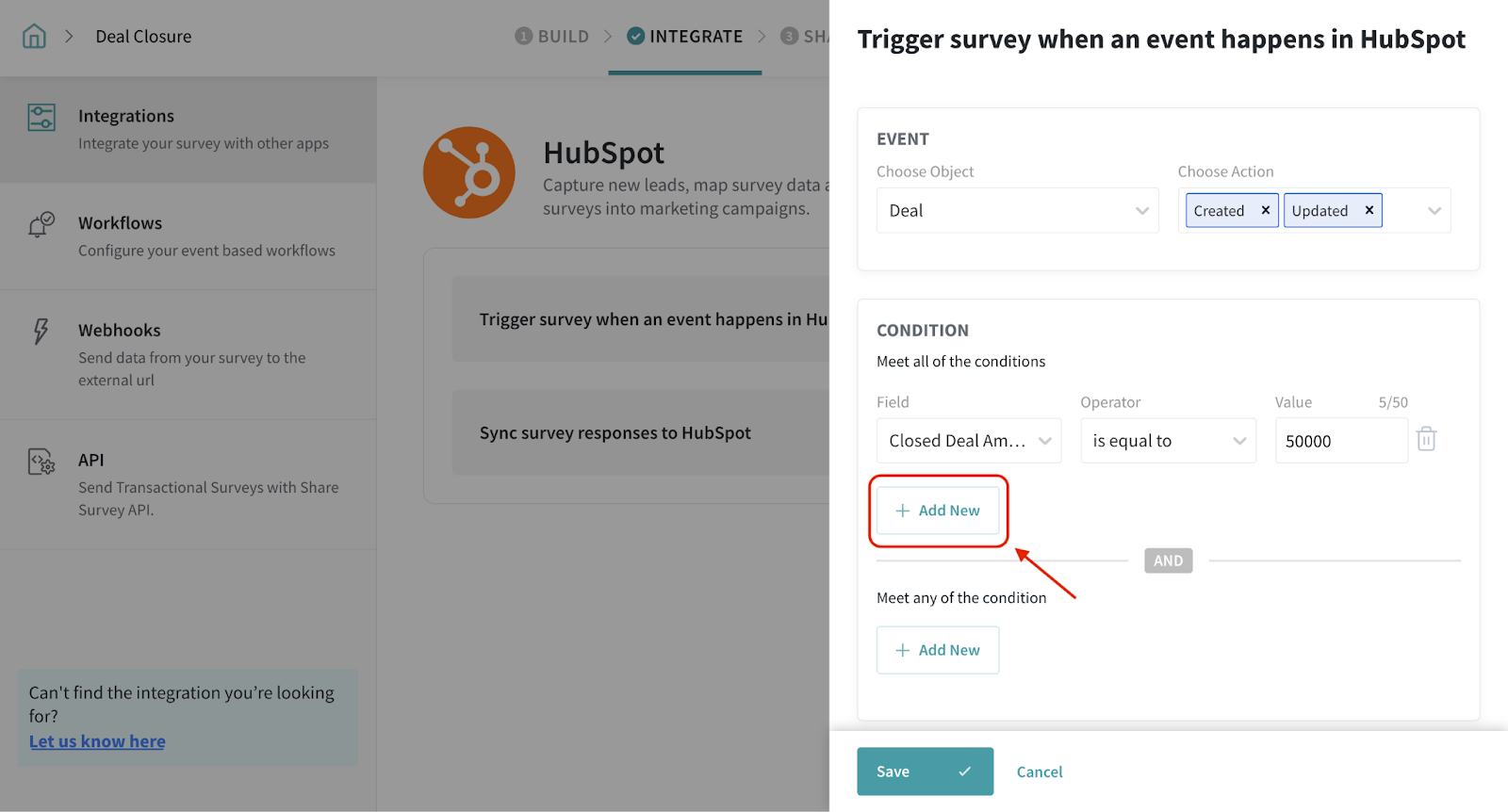
b. Meet any of the conditions: The survey will be triggered if any of the conditions here are met, along with all conditions from the previous section.
Click Add New to set up conditions.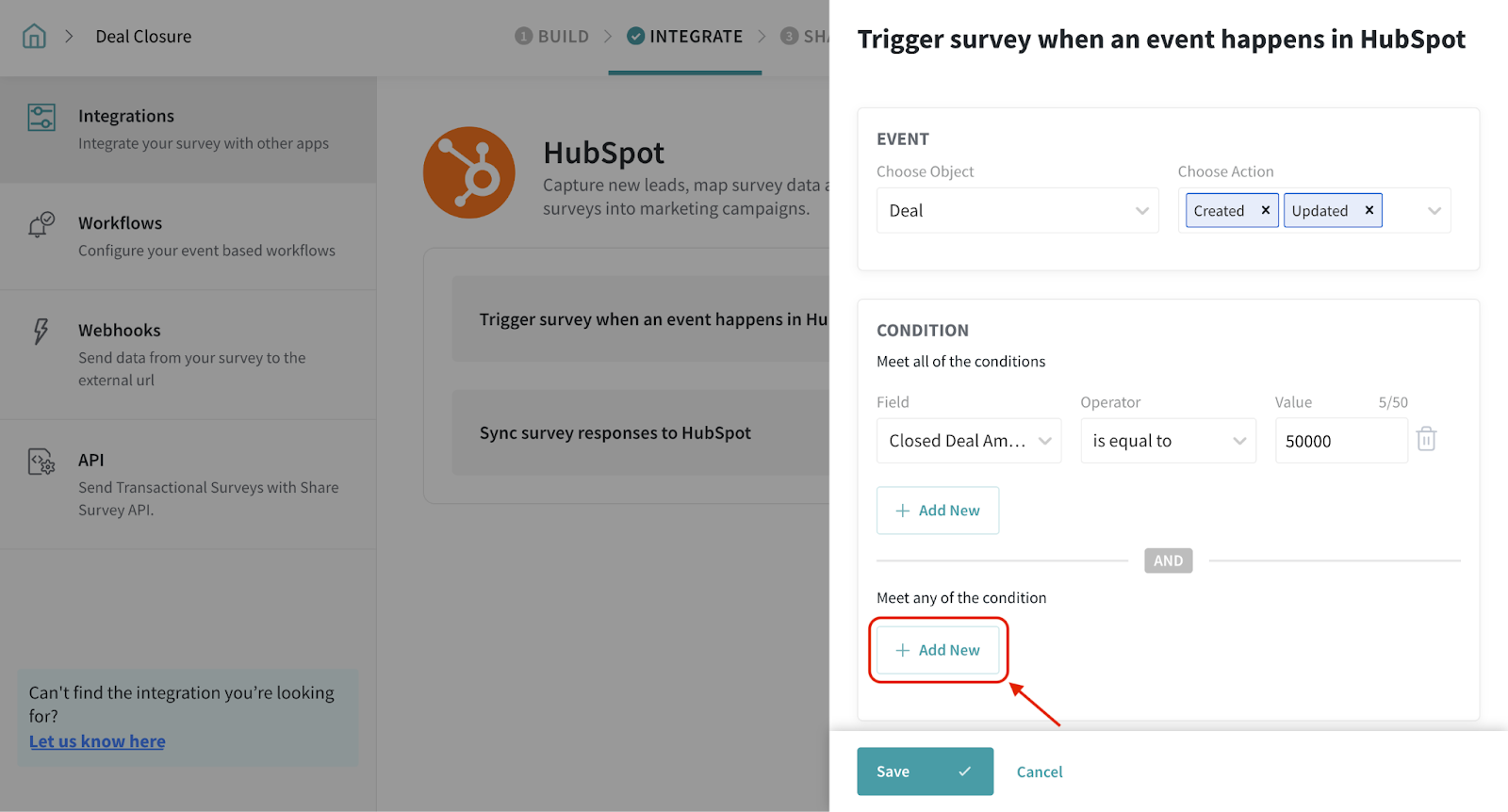
Select the Field, Operator, and Value as before.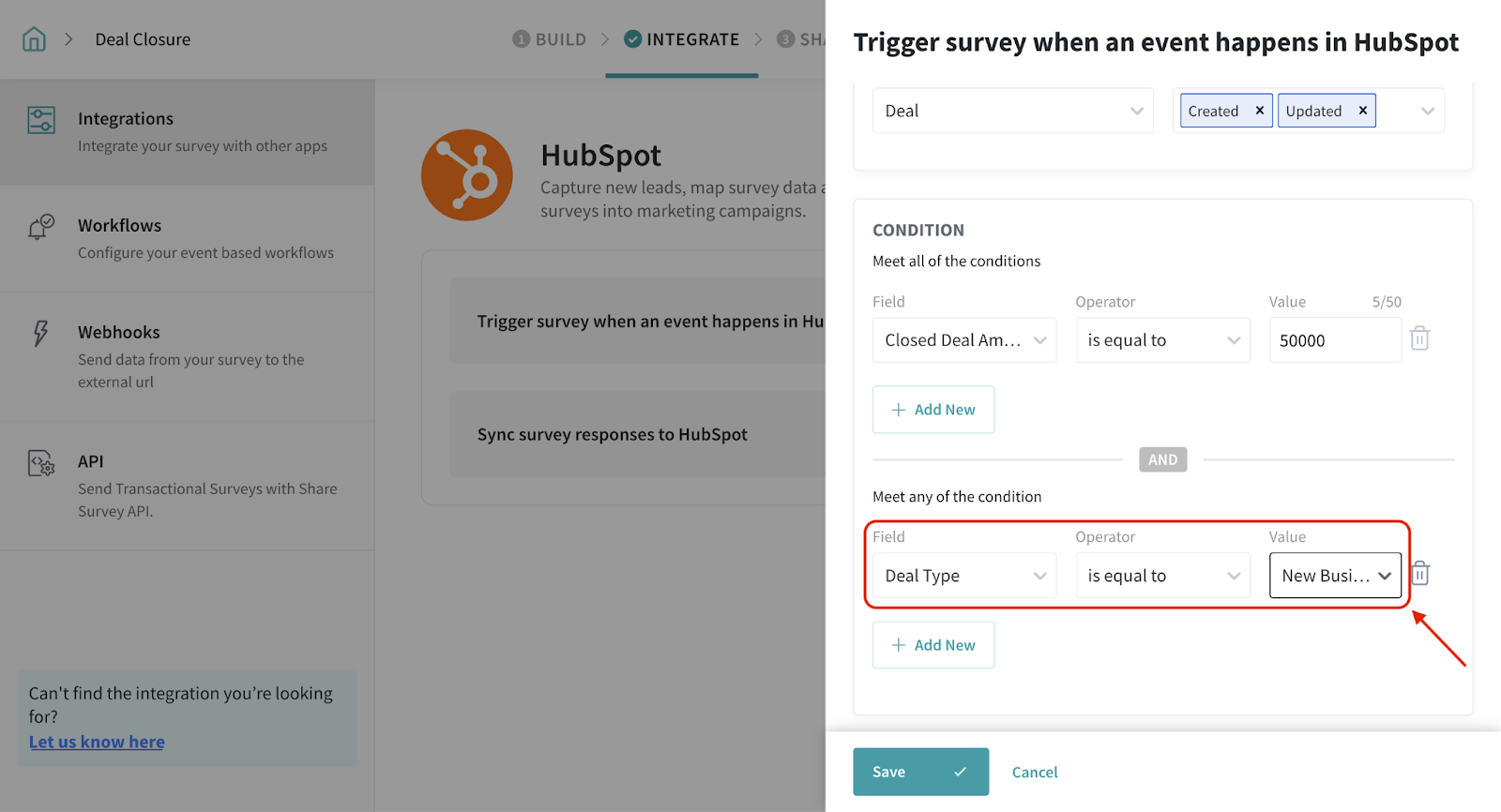
Click Add New to add more conditions if needed.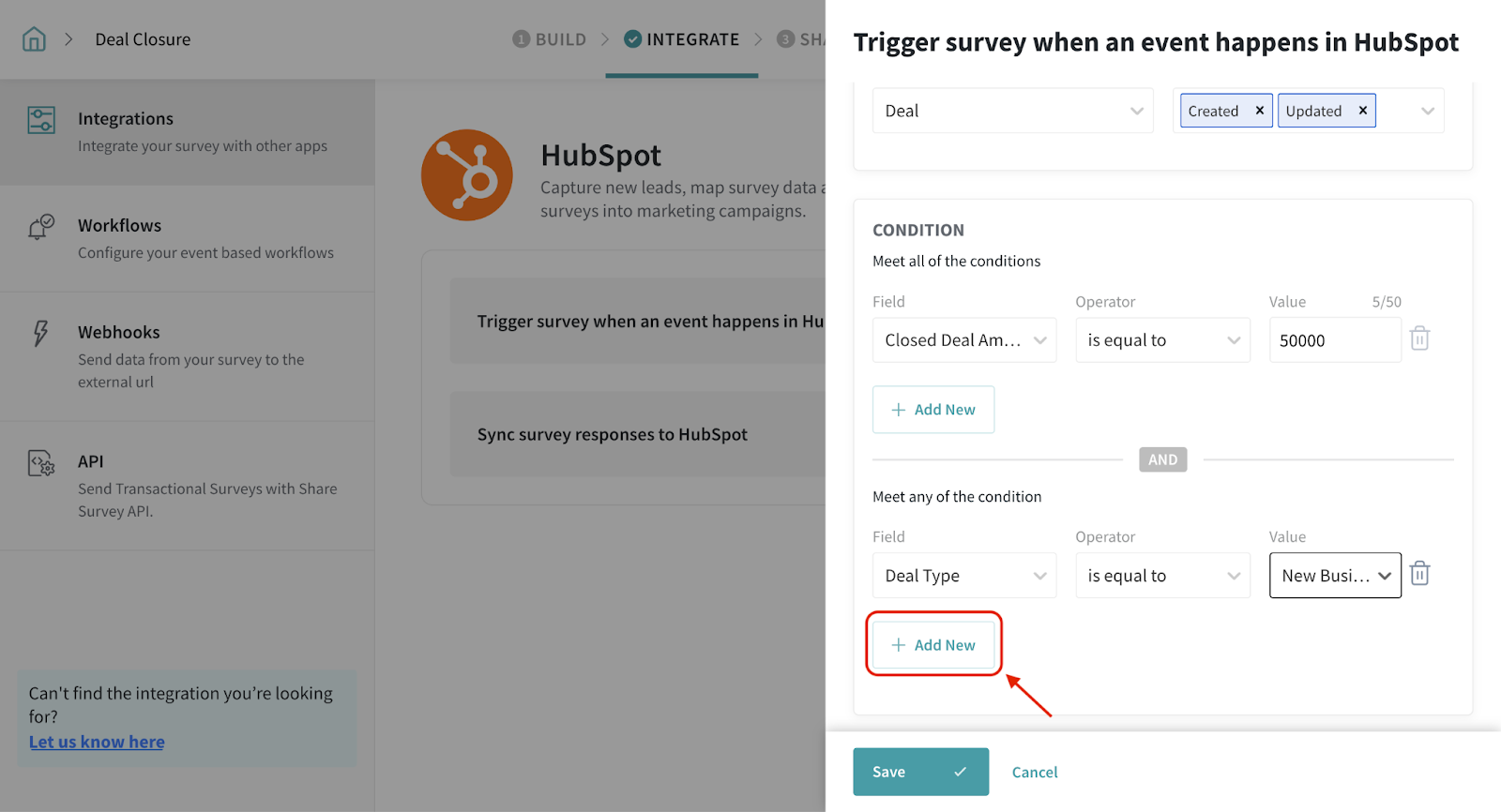
7. Under Pass variables to survey, select the HubSpot fields you want to map to your survey. Choosing to pass variables will help you track and analyze data based on HubSpot properties such as ticket properties.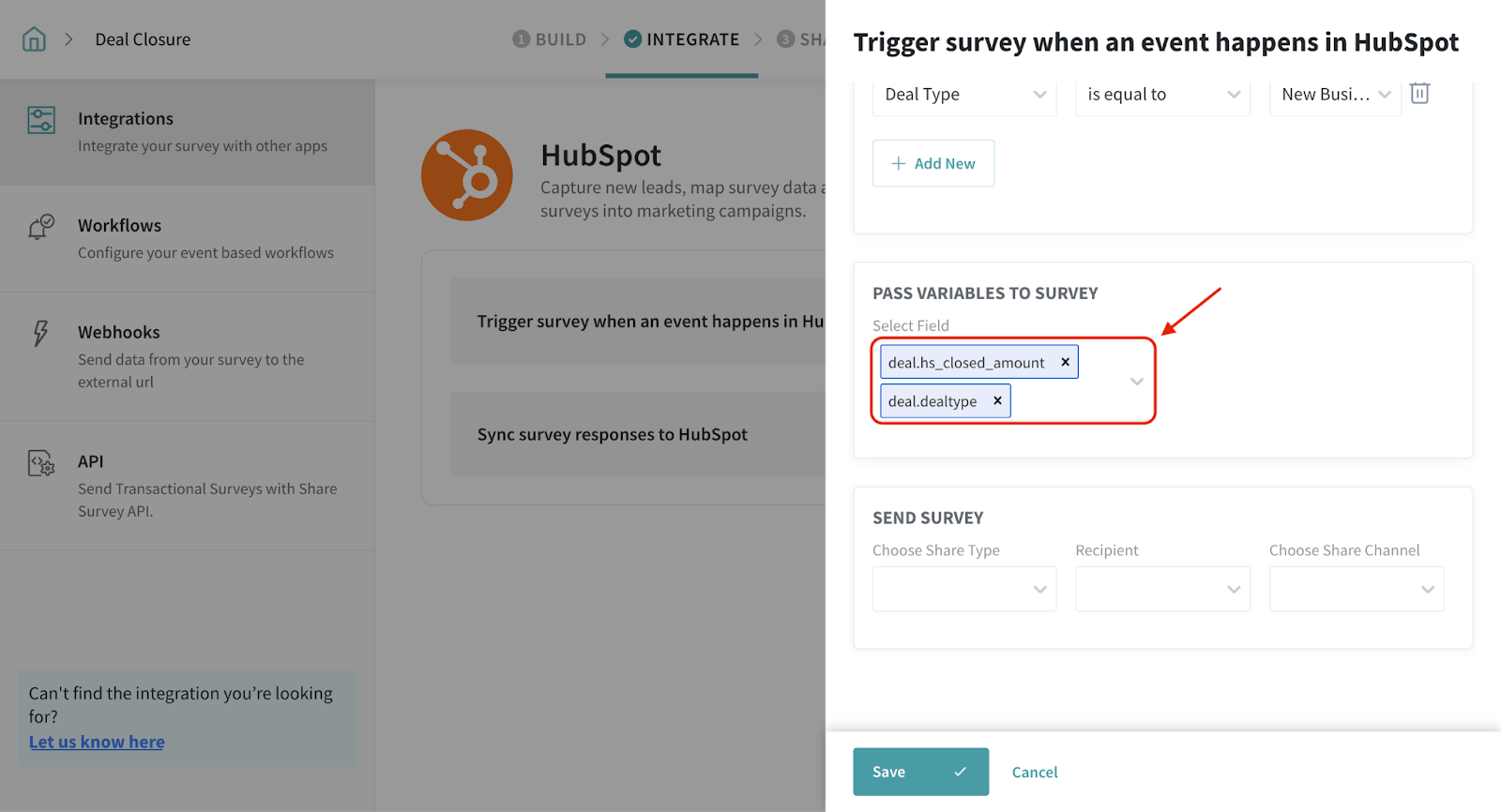
8. Choose from the share type to trigger the survey when an event happens in HubSpot.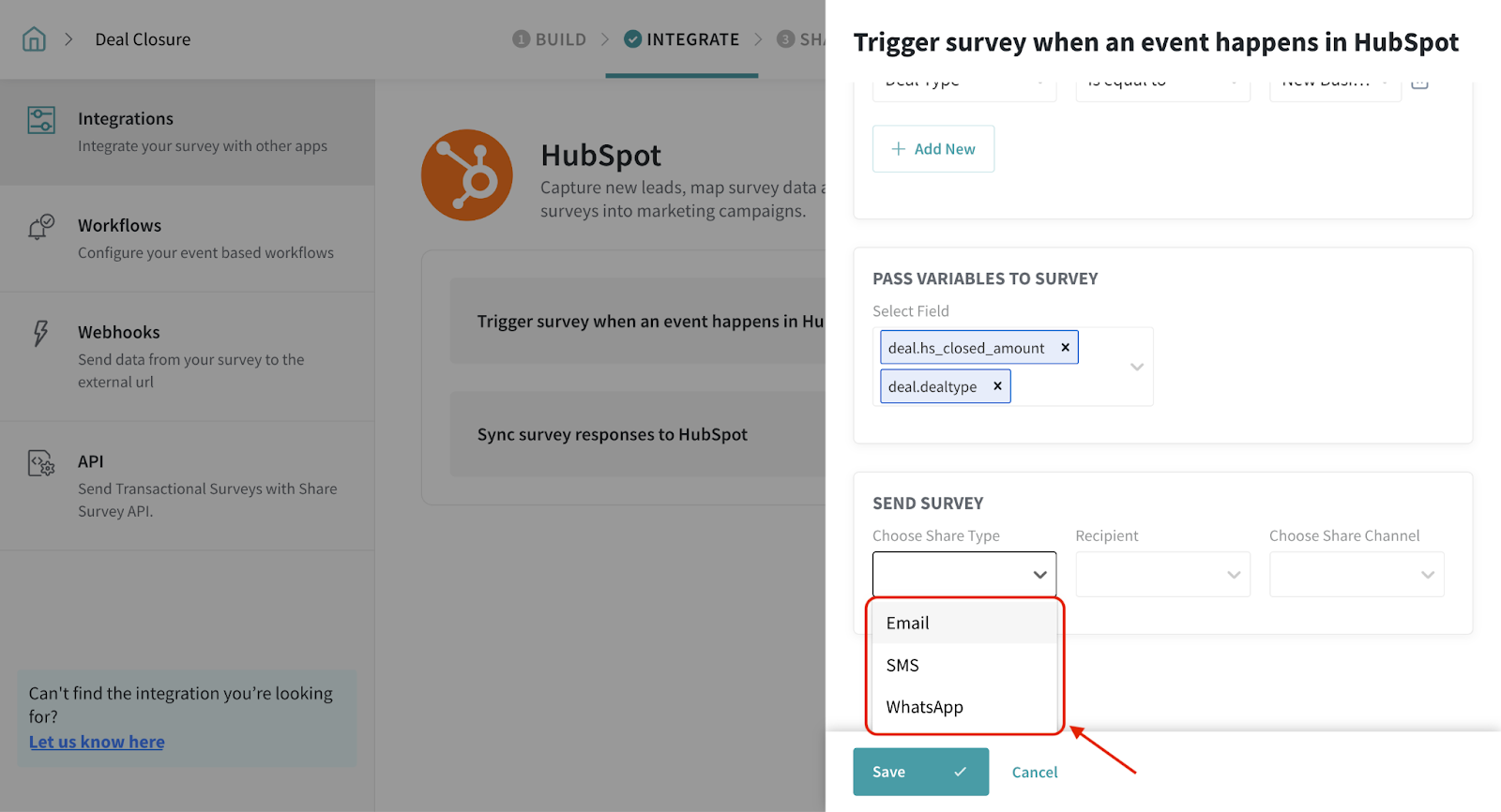
9. Choose the HubSpot field that maps the recipient’s information.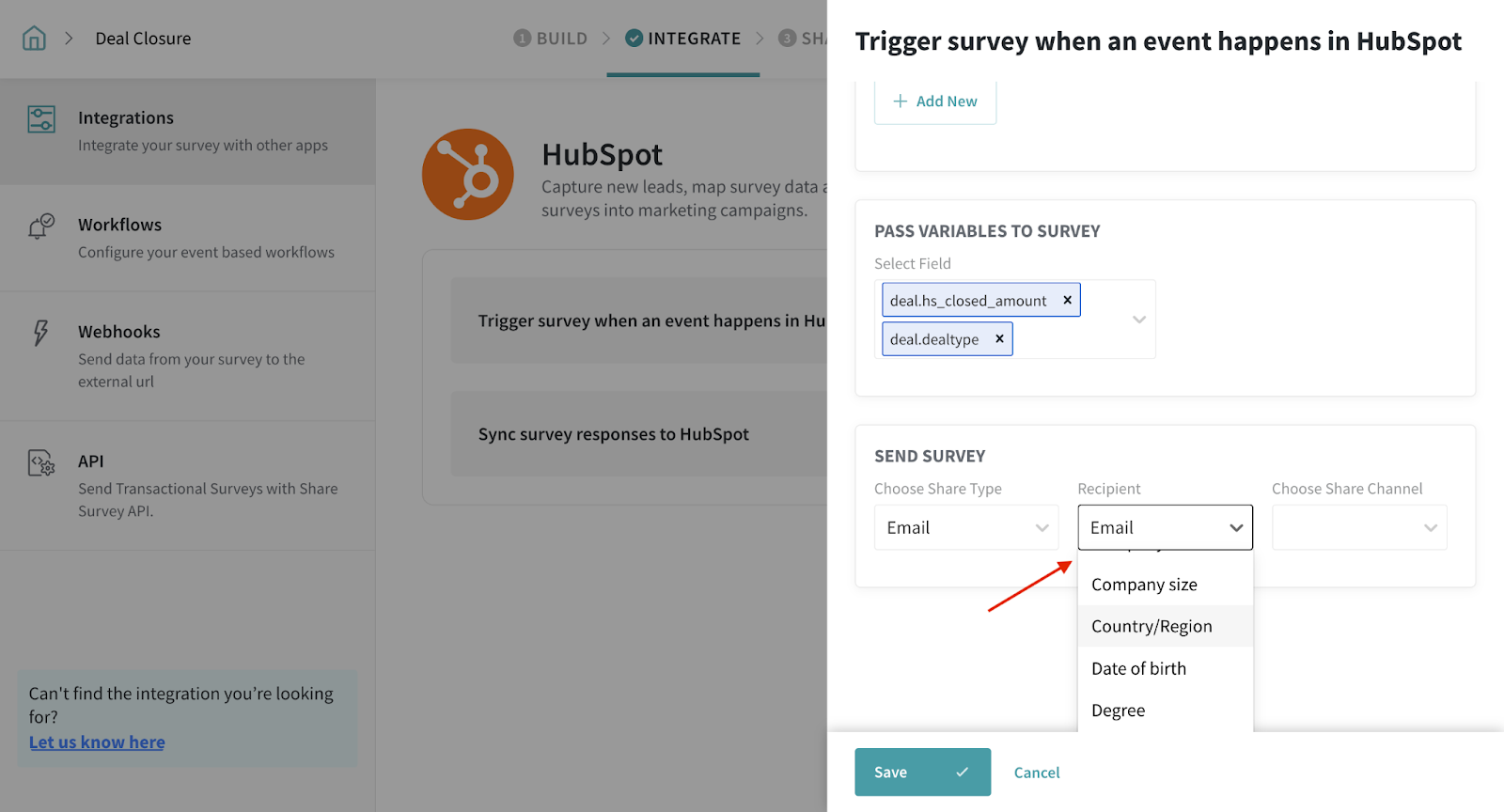
10. Select a specific share channel created within your SurveySparrow account.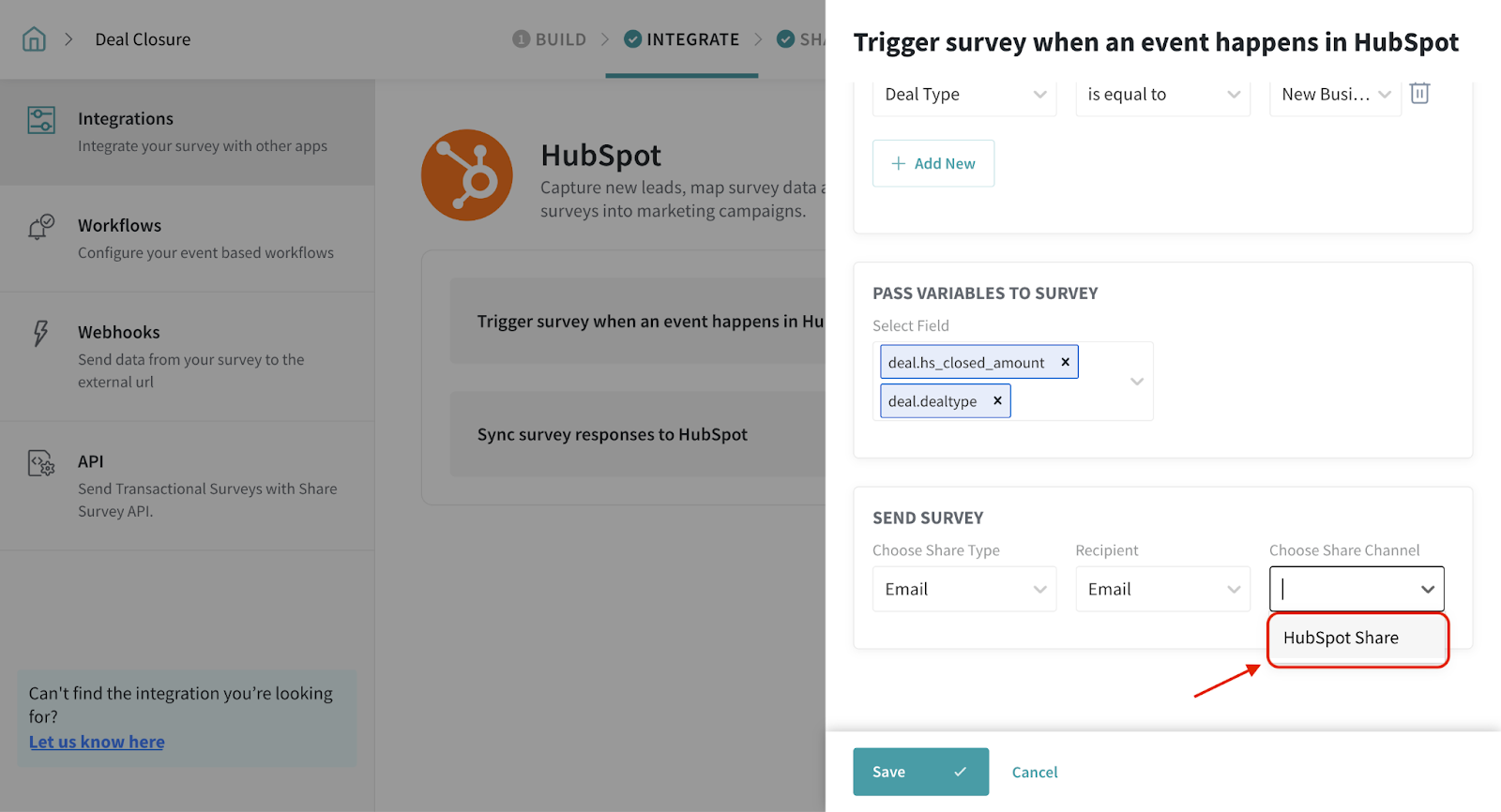
Note: Only the selected share channel will be used to send surveys when conditions are met.
Refer to this article to create a share channel for your survey.
11. Click Save.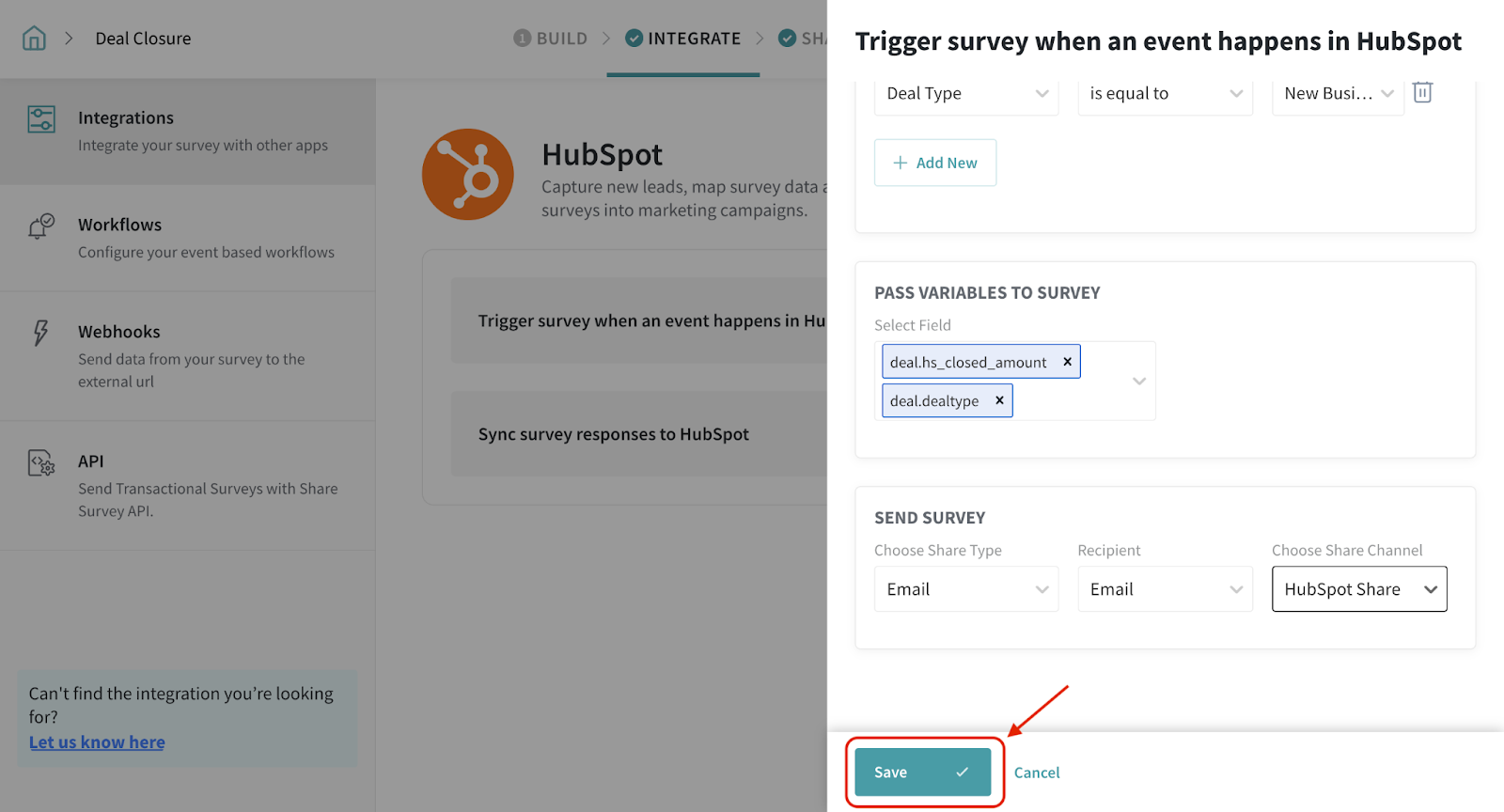
12. Once saved, the integration will be live.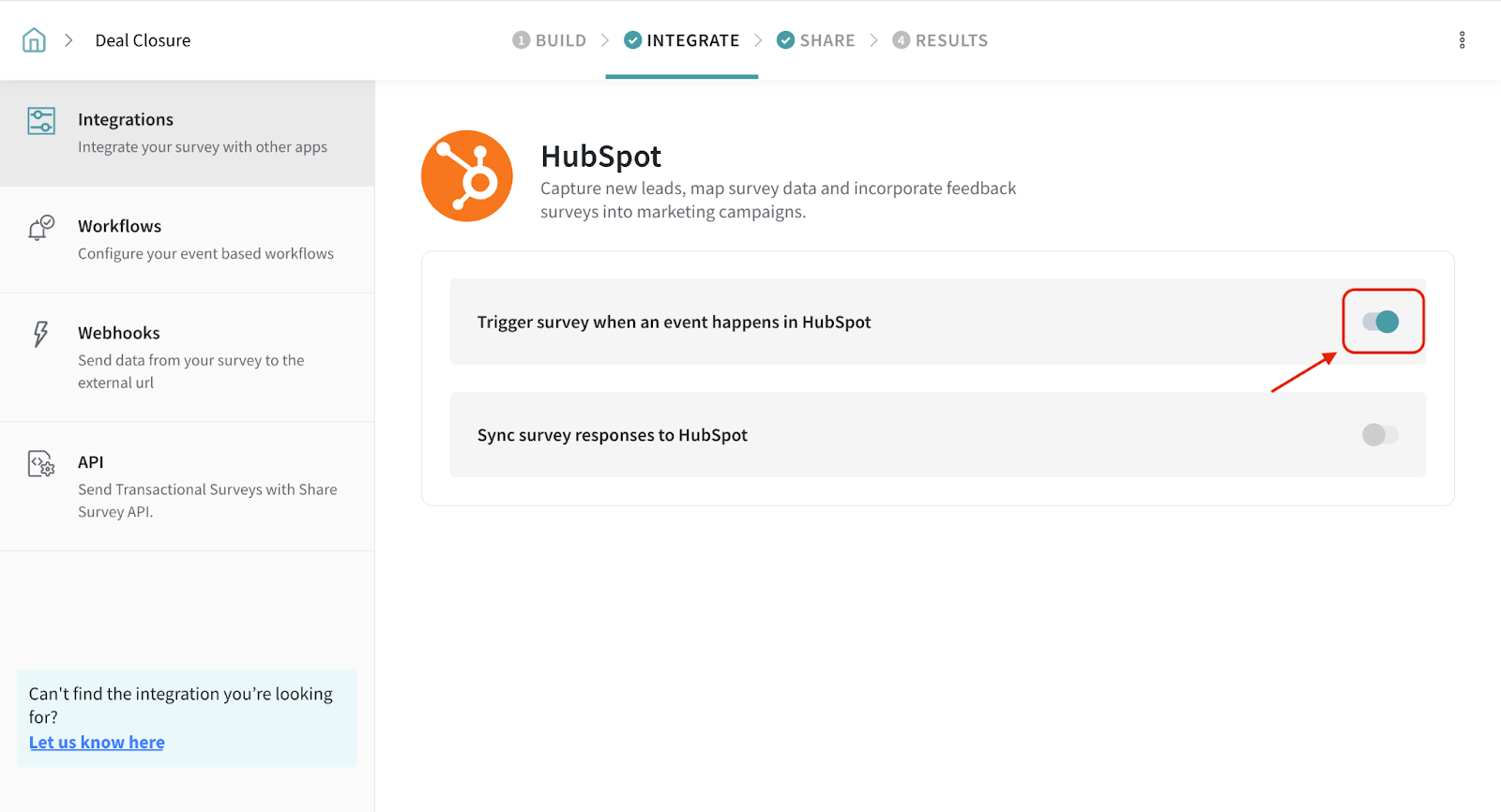
Now, whenever a configured event occurs in HubSpot, the survey gets triggered to the customer.
1. Inside your SurveySparrow account, click on Contacts in the top menu bar, then click Contacts from the menu.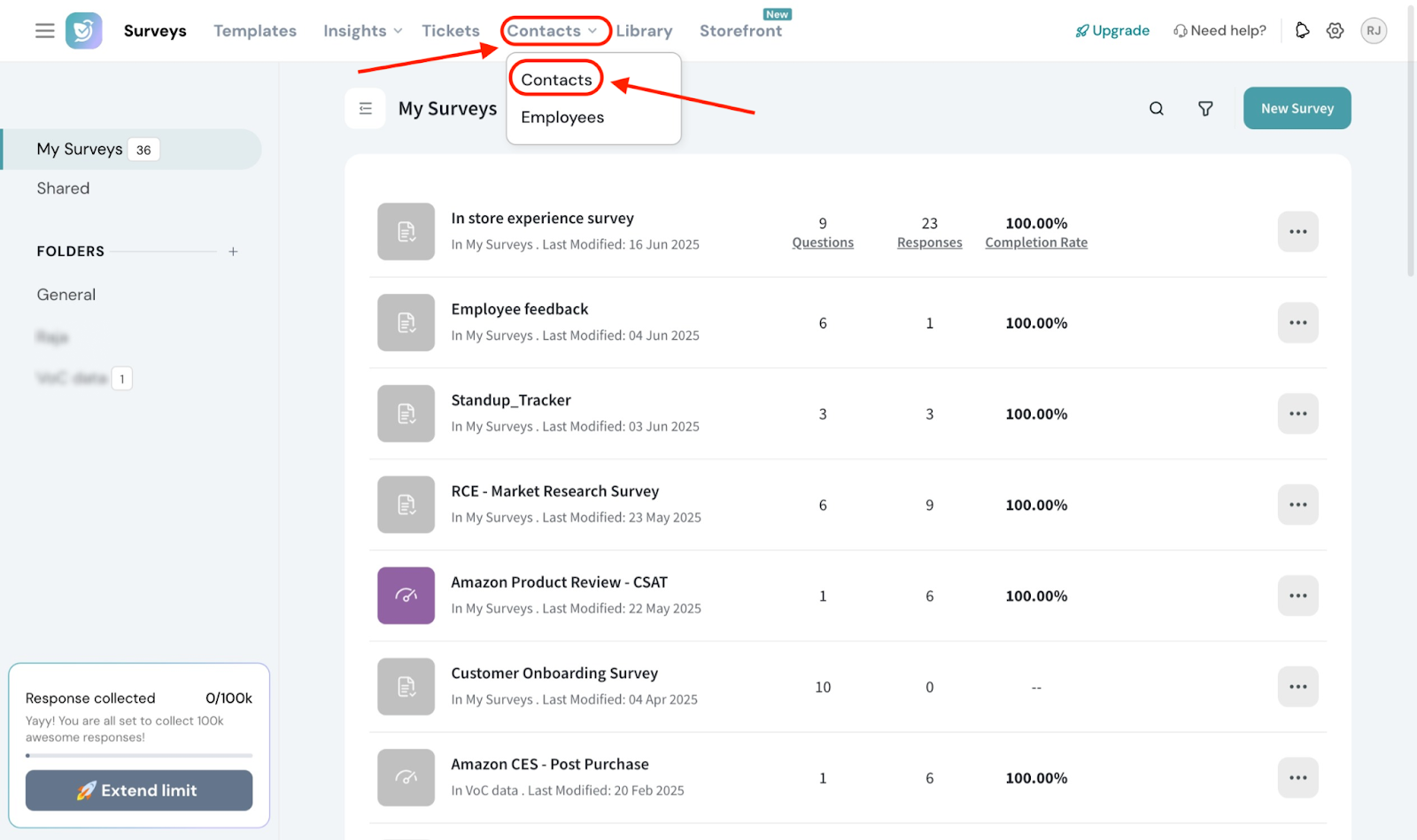
2. In the Contacts section, click on the All Contacts button.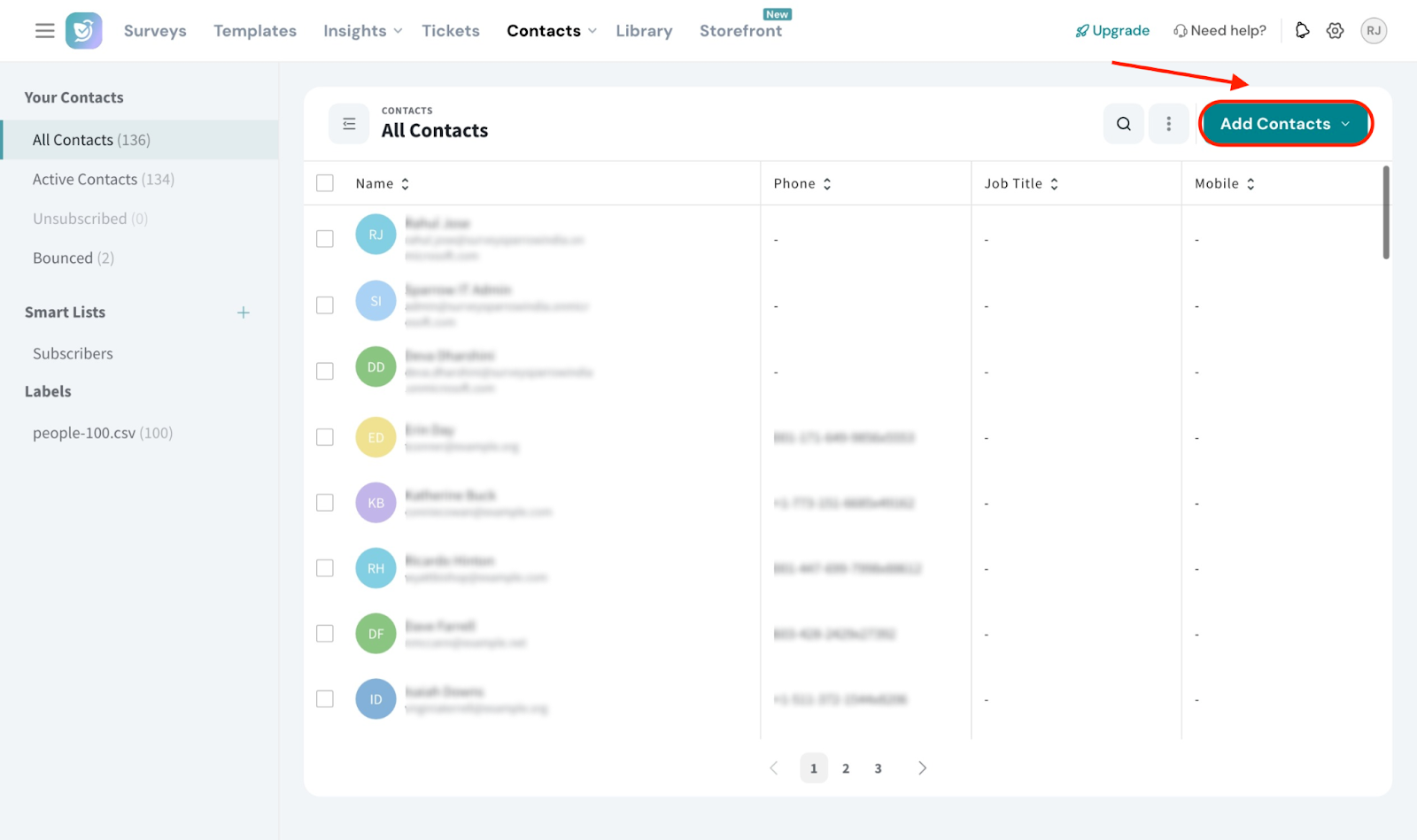
3. In the menu, click More ways to import.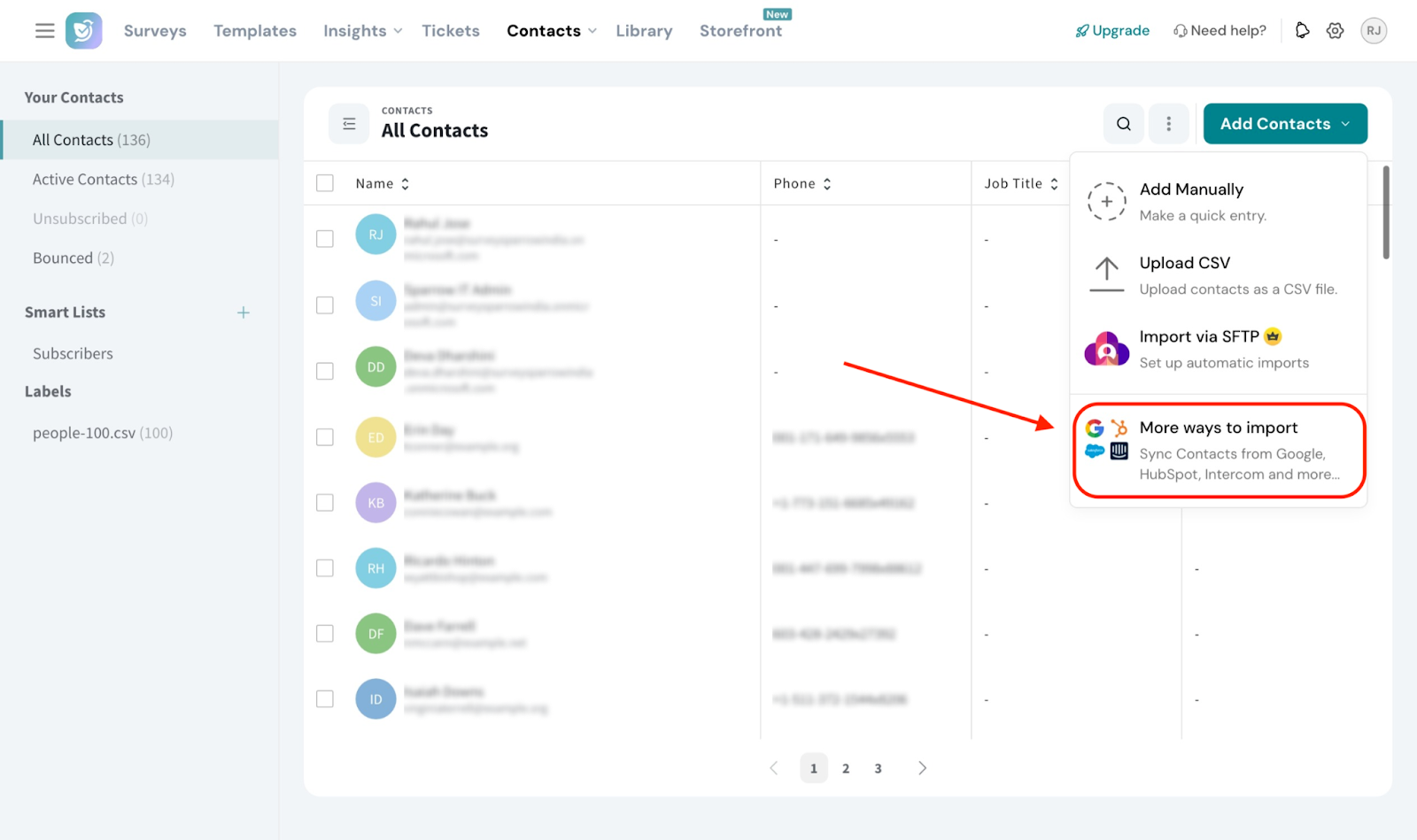
4. Click on HubSpot from the side menu.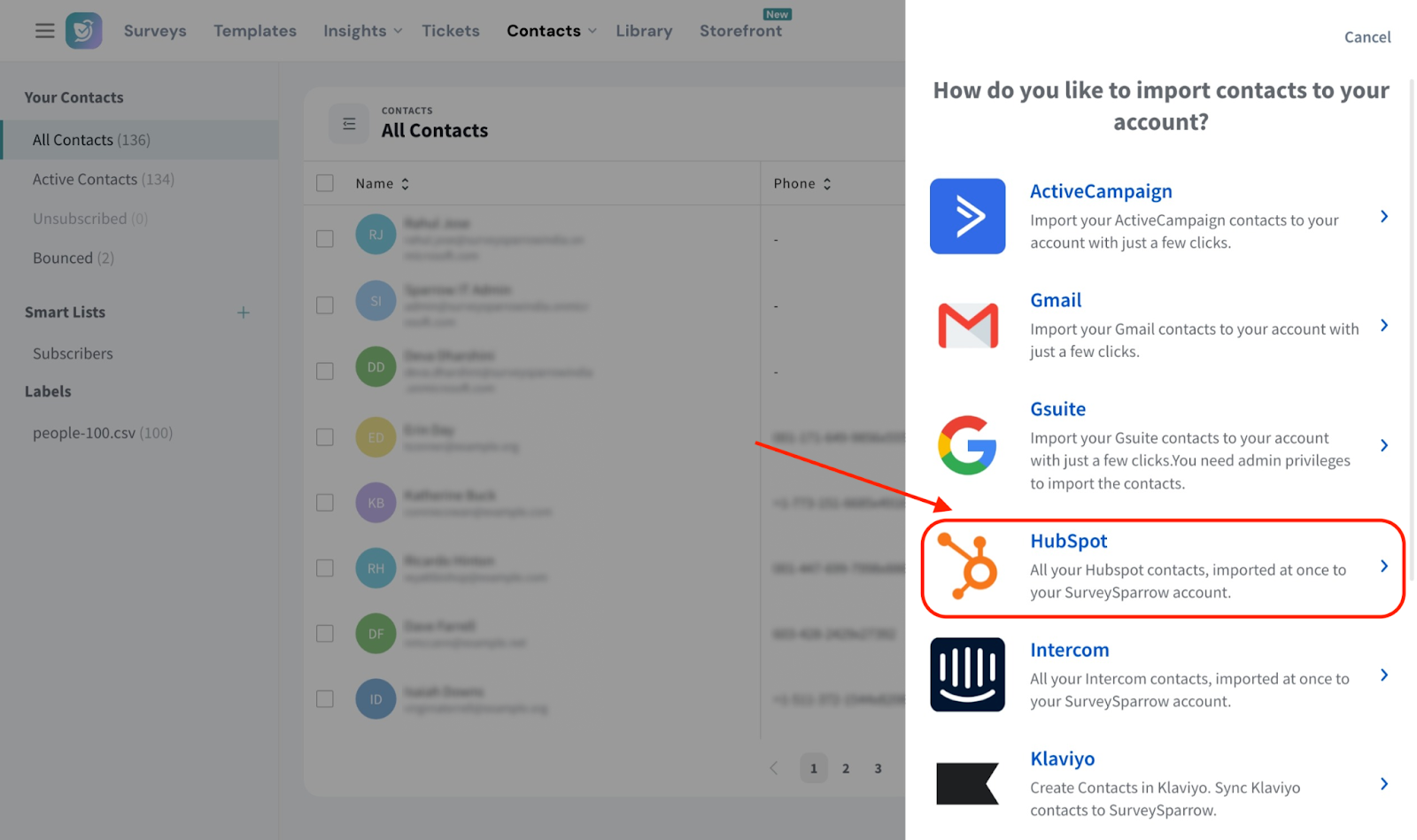
5. You can import all your contacts at once, or choose a specific list to import. Choose your preferred option and click Next.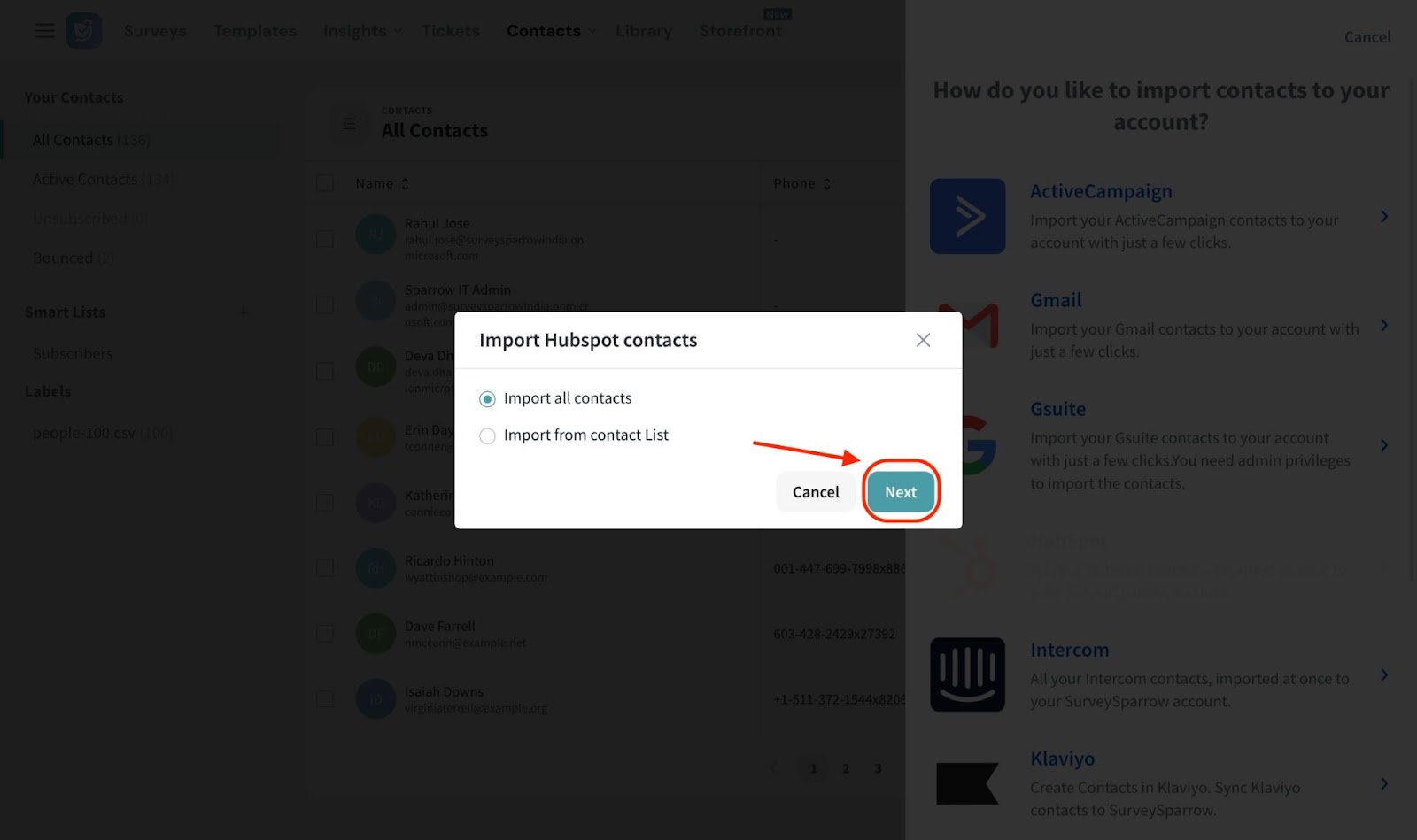
Note: If you click Import from contact list, you will see a drop-down menu. Click on it and choose from the lists in your HubSpot account, then click Next.
6. The mapping section opens up. Here, most of the HubSpot contact data is already mapped onto SurveySparrow fields, but you can manually adjust any mapping by clicking on its drop-down menu.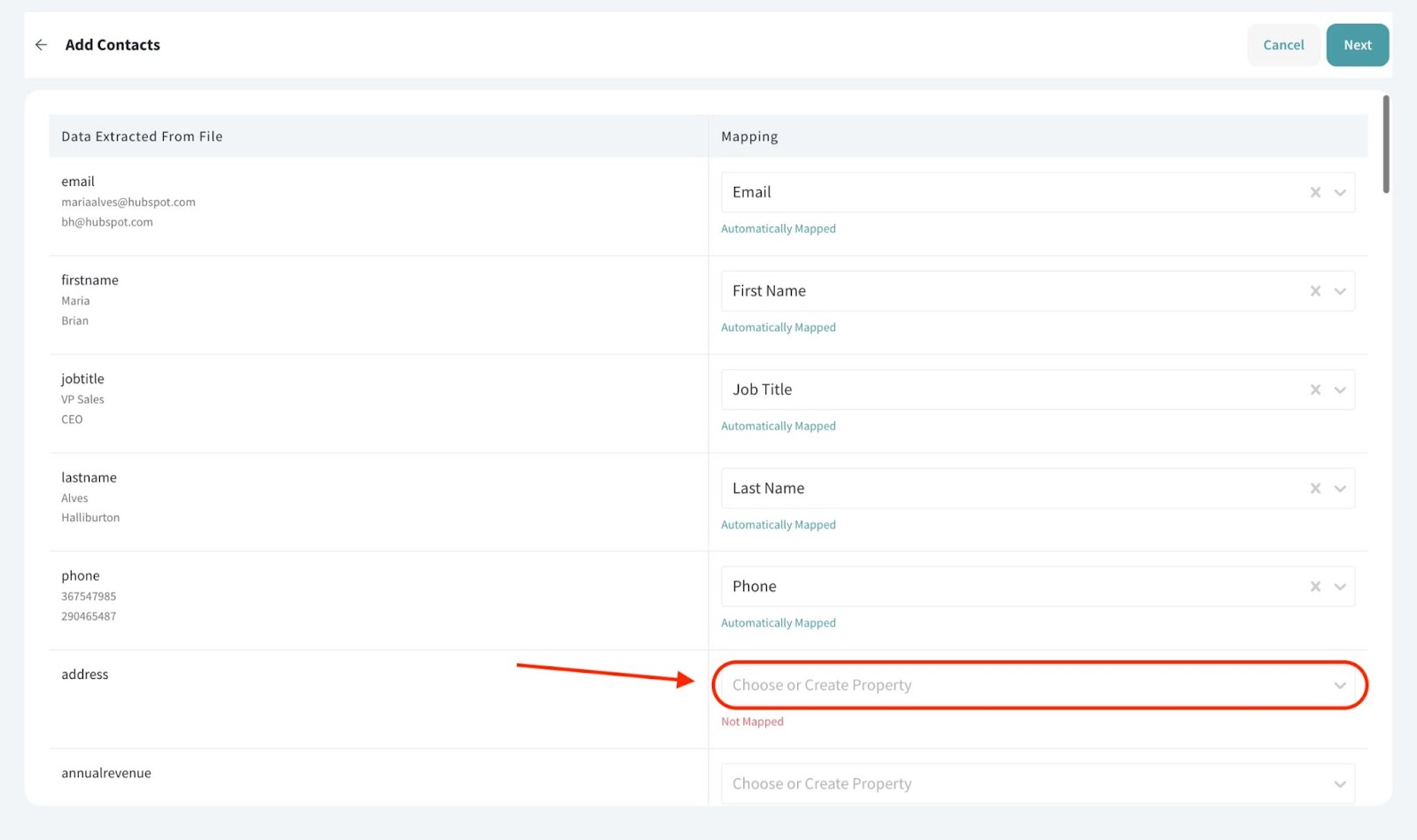
7. You can choose any of the default fields in SurveySparrow. In case you do not find a satisfactory field, you can create one by clicking on Create a Property.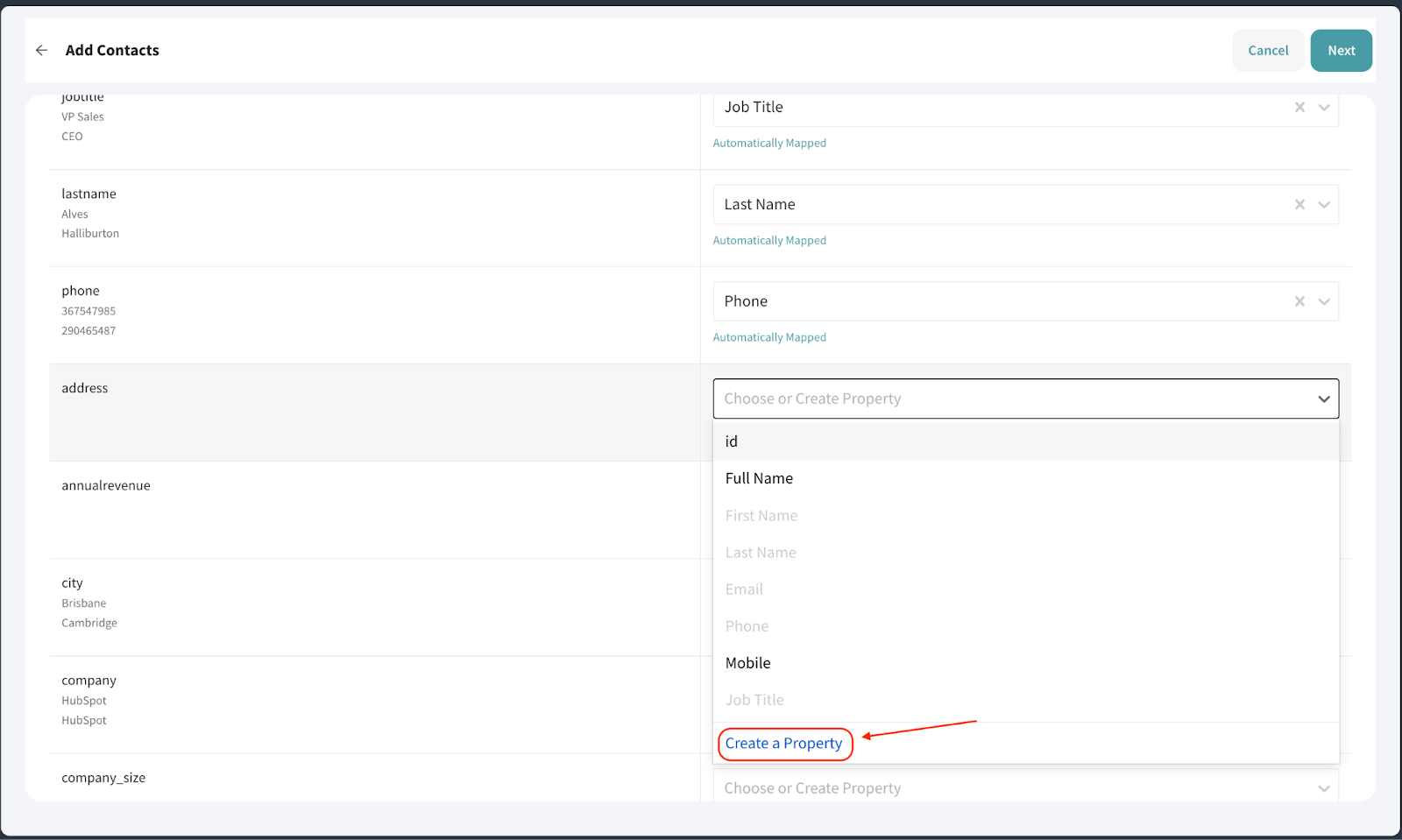
8. Here you can assign a label and name, choose the property type, add a description and choose the group. Once you are done, you can click Save & Close. Or you can choose to proceed to create another property by clicking on Save & Add Another.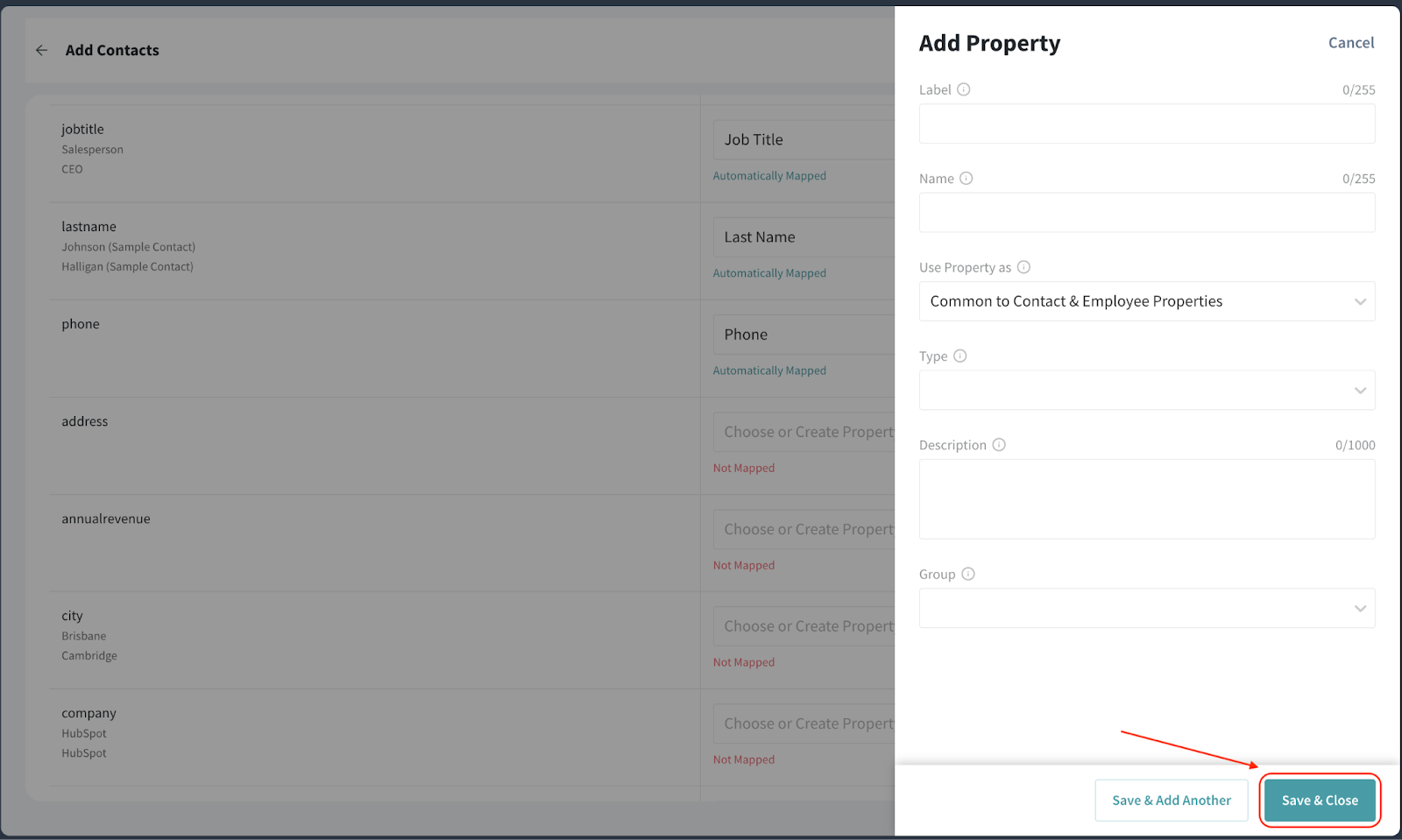
9. Once you are satisfied with the mapping, click Next.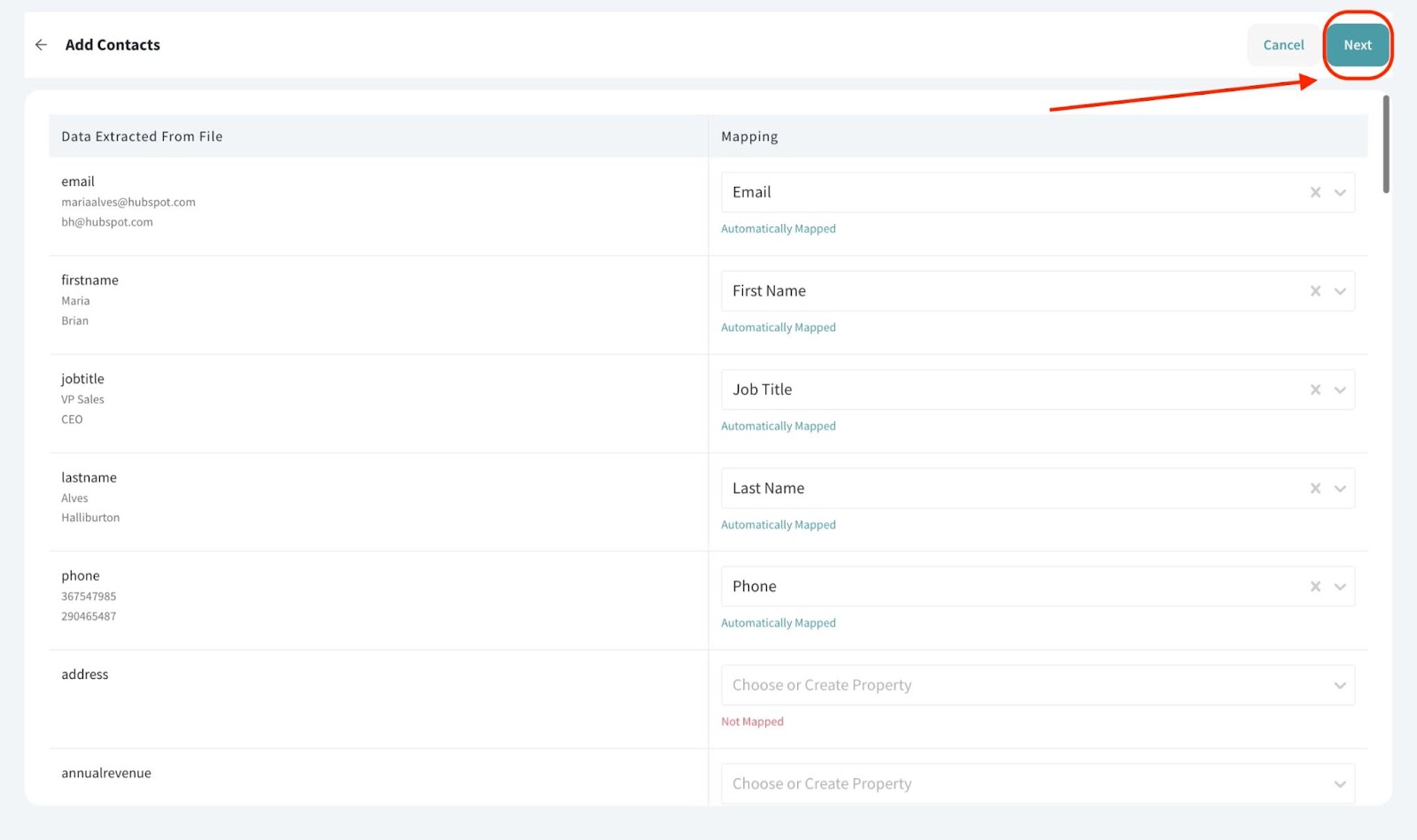
10. You must provide a name for the import. Once done, click Finish Import.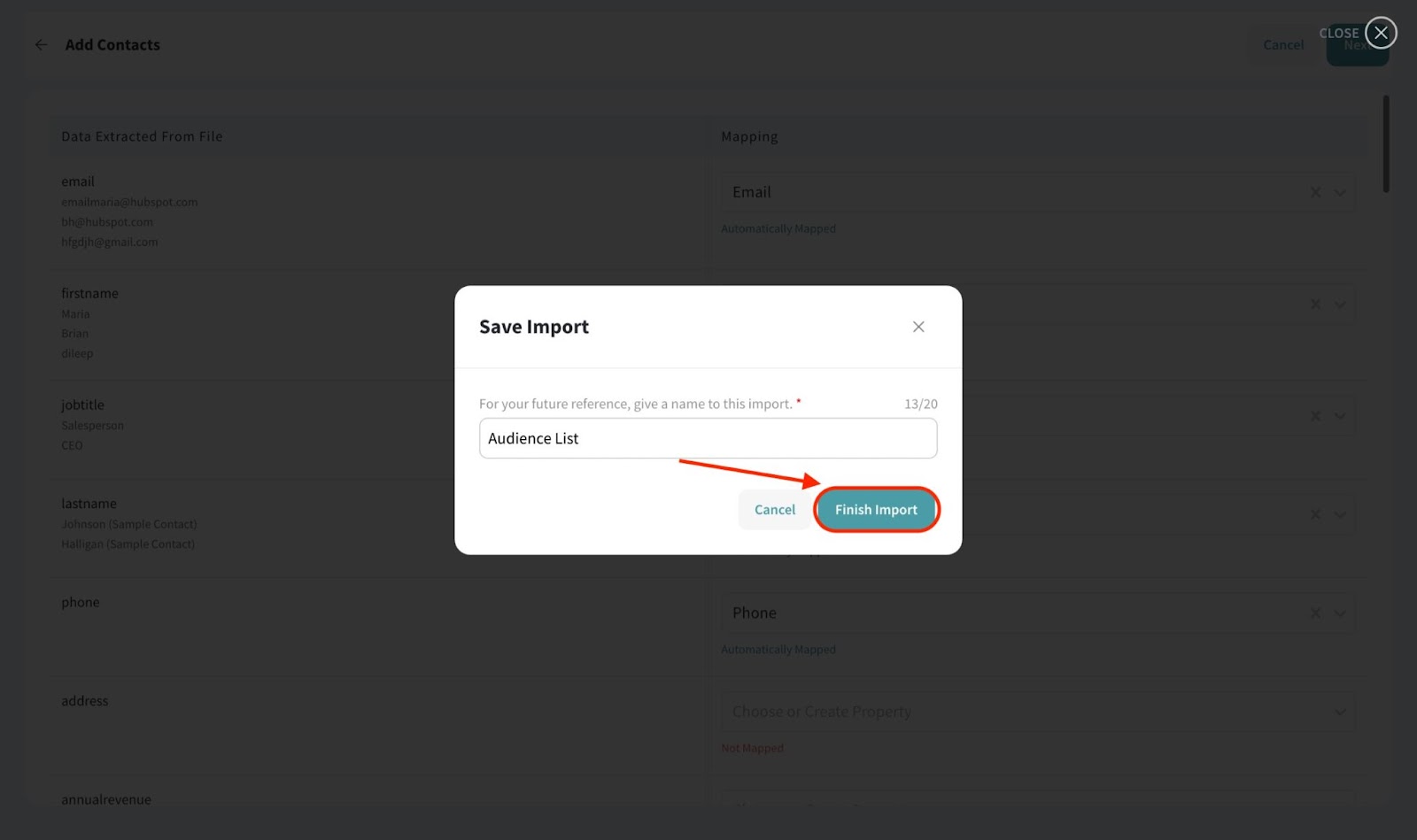
11. The imports section opens, revealing the recently finished import. If you wish to have it on a recurring basis, click on the toggle under Schedule.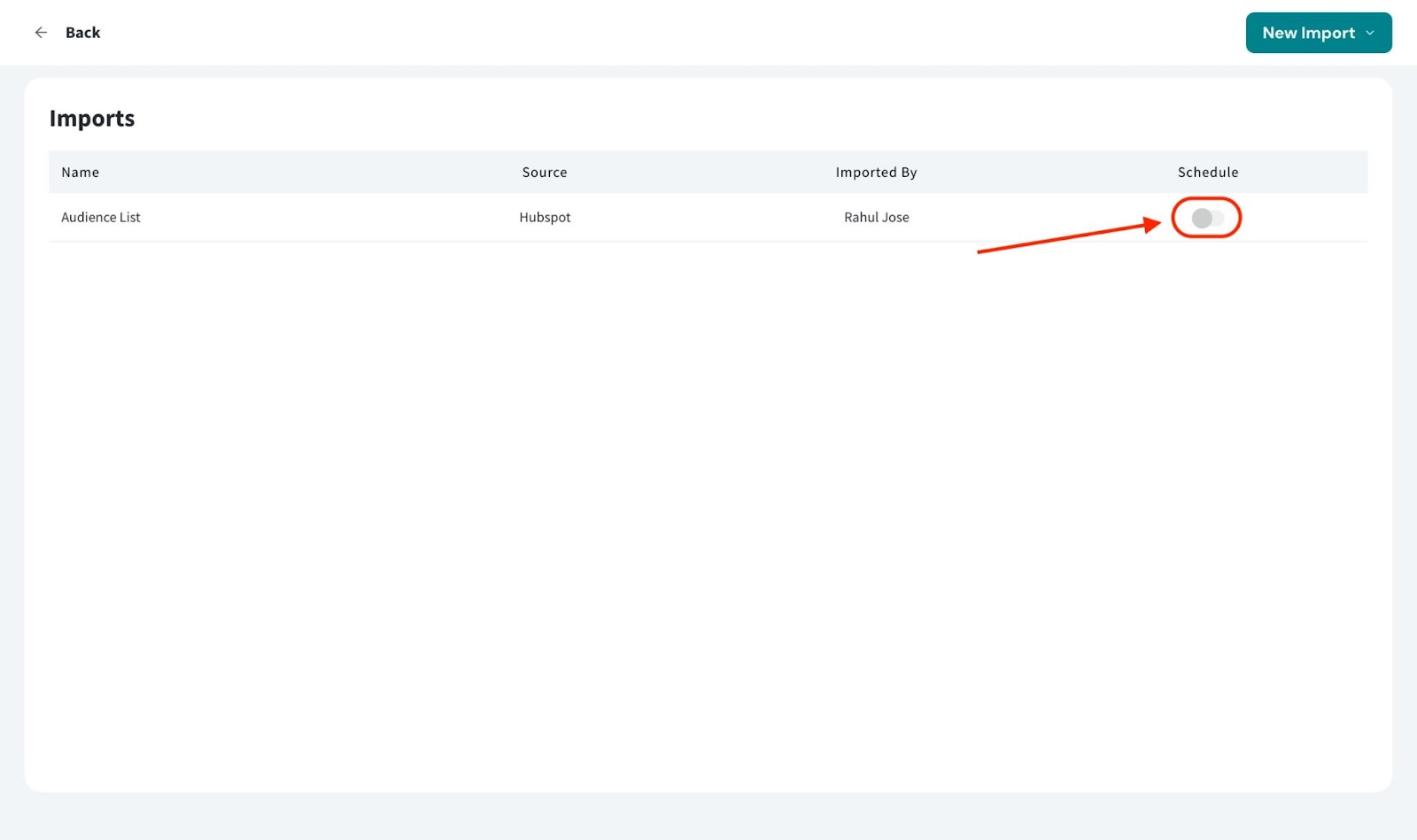
12. A scheduling pop-up opens. Click on the drop-down menu and choose the frequency (daily, weekly or monthly).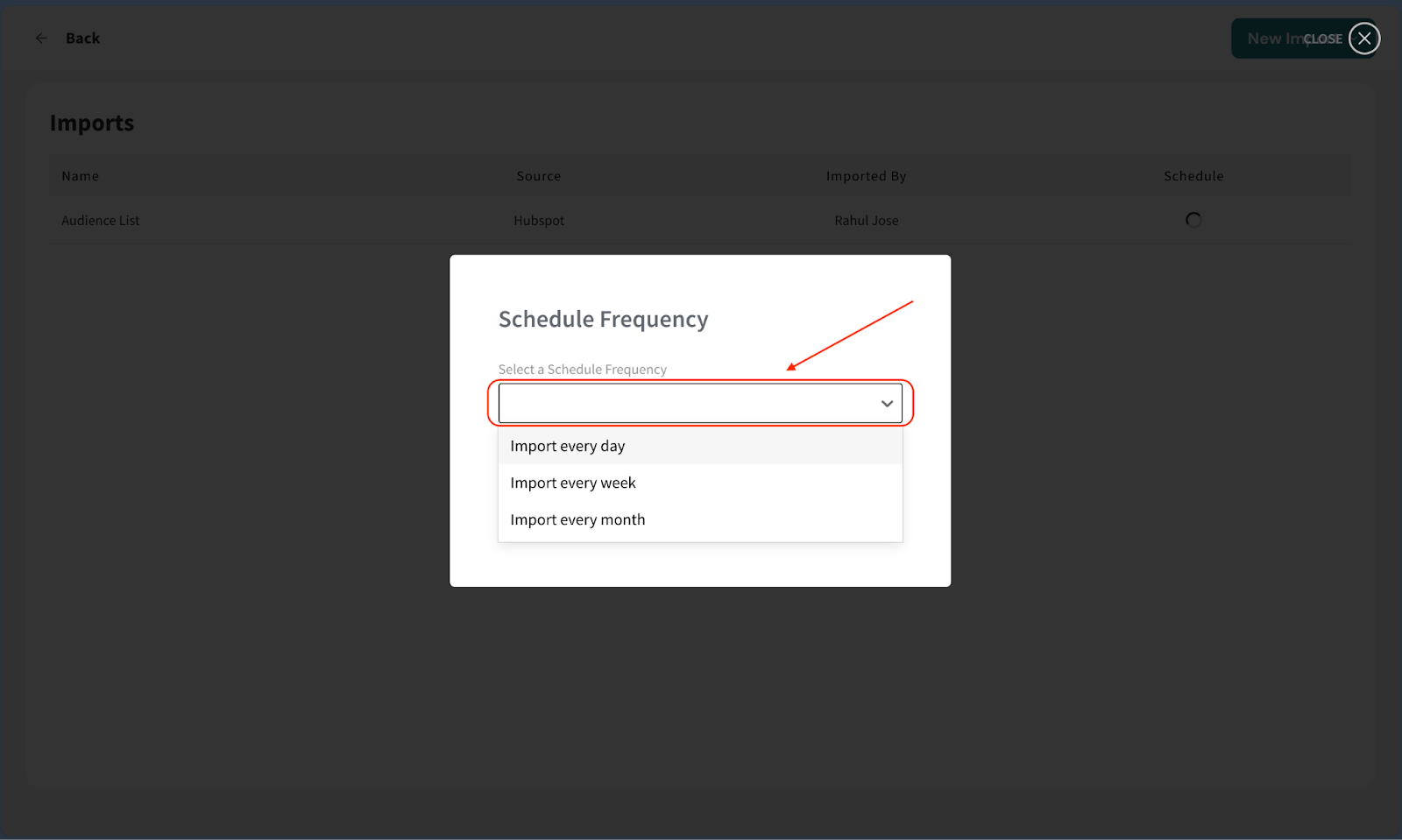
13. Once done, click Save Changes.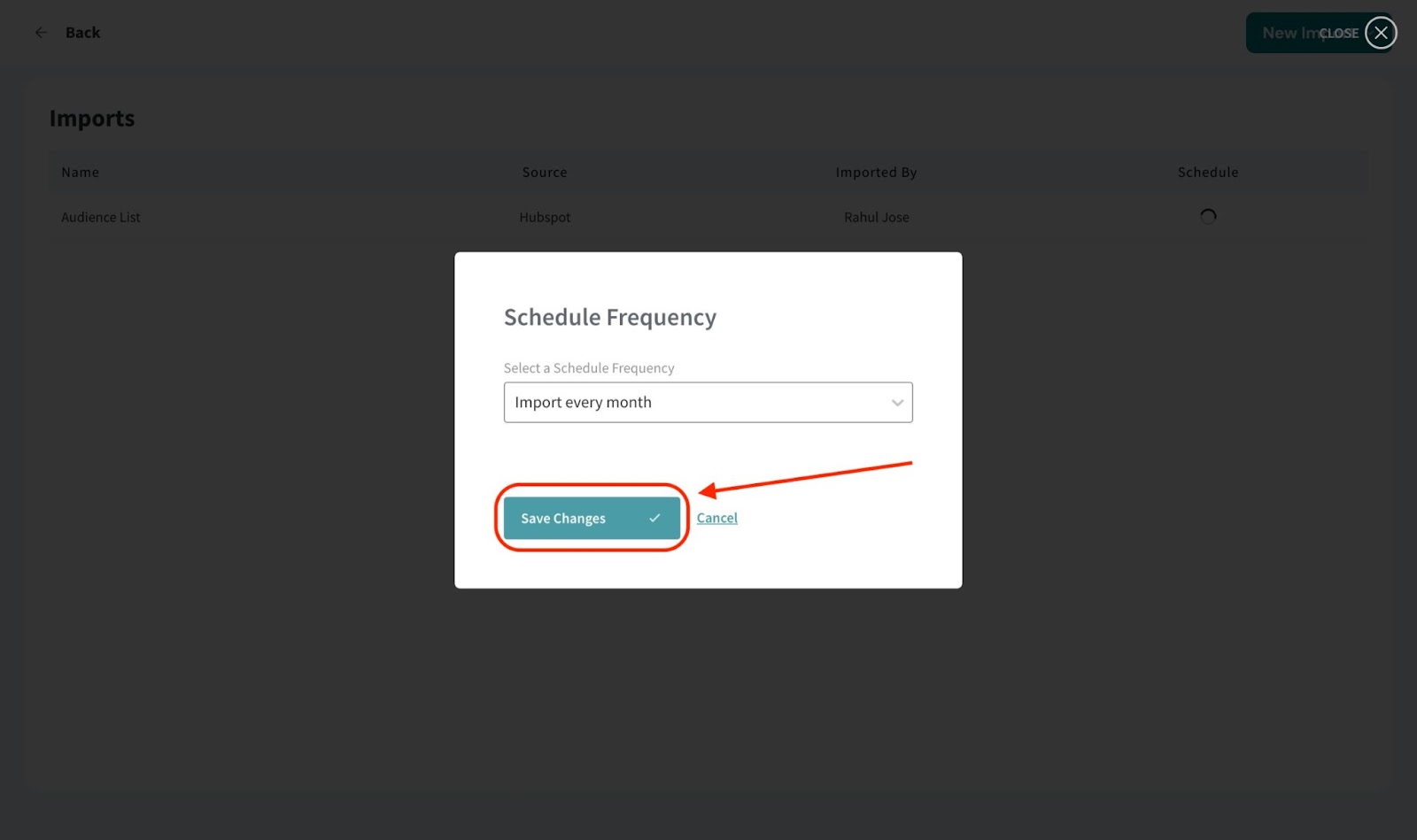
14. If you wish to import another list, click New Import.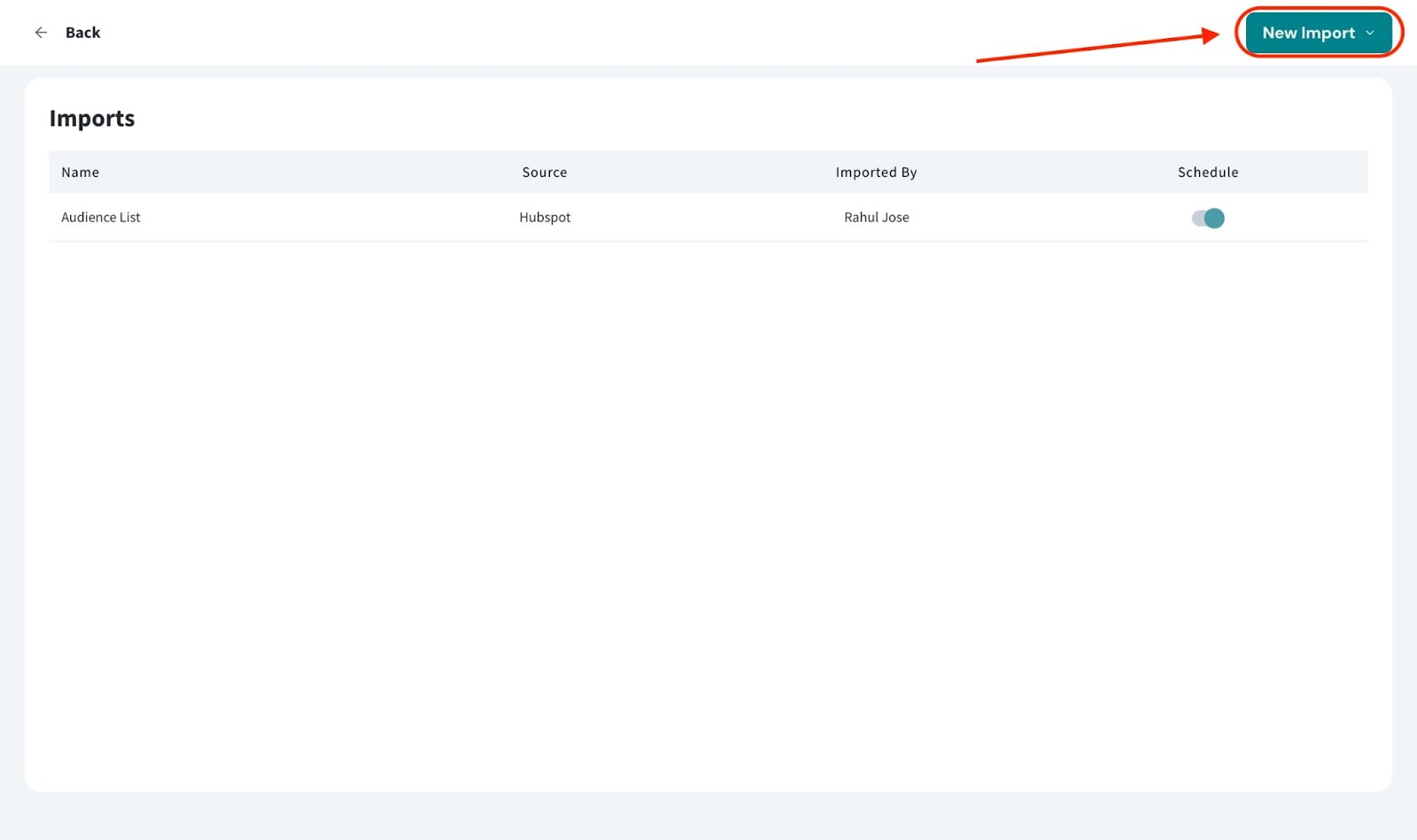
1. Log in to your HubSpot account.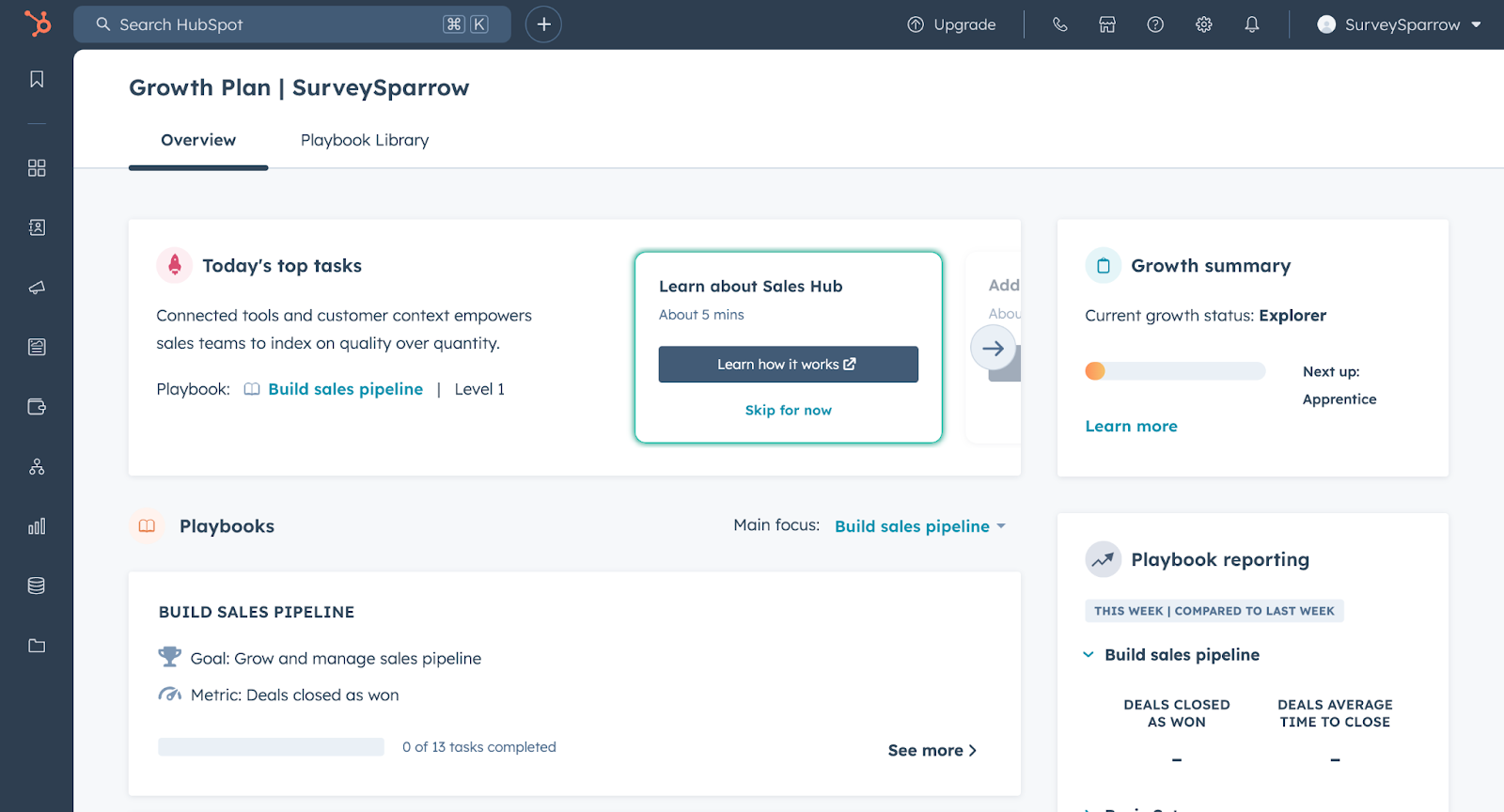
2. Click the Marketplace icon from the top-right corner.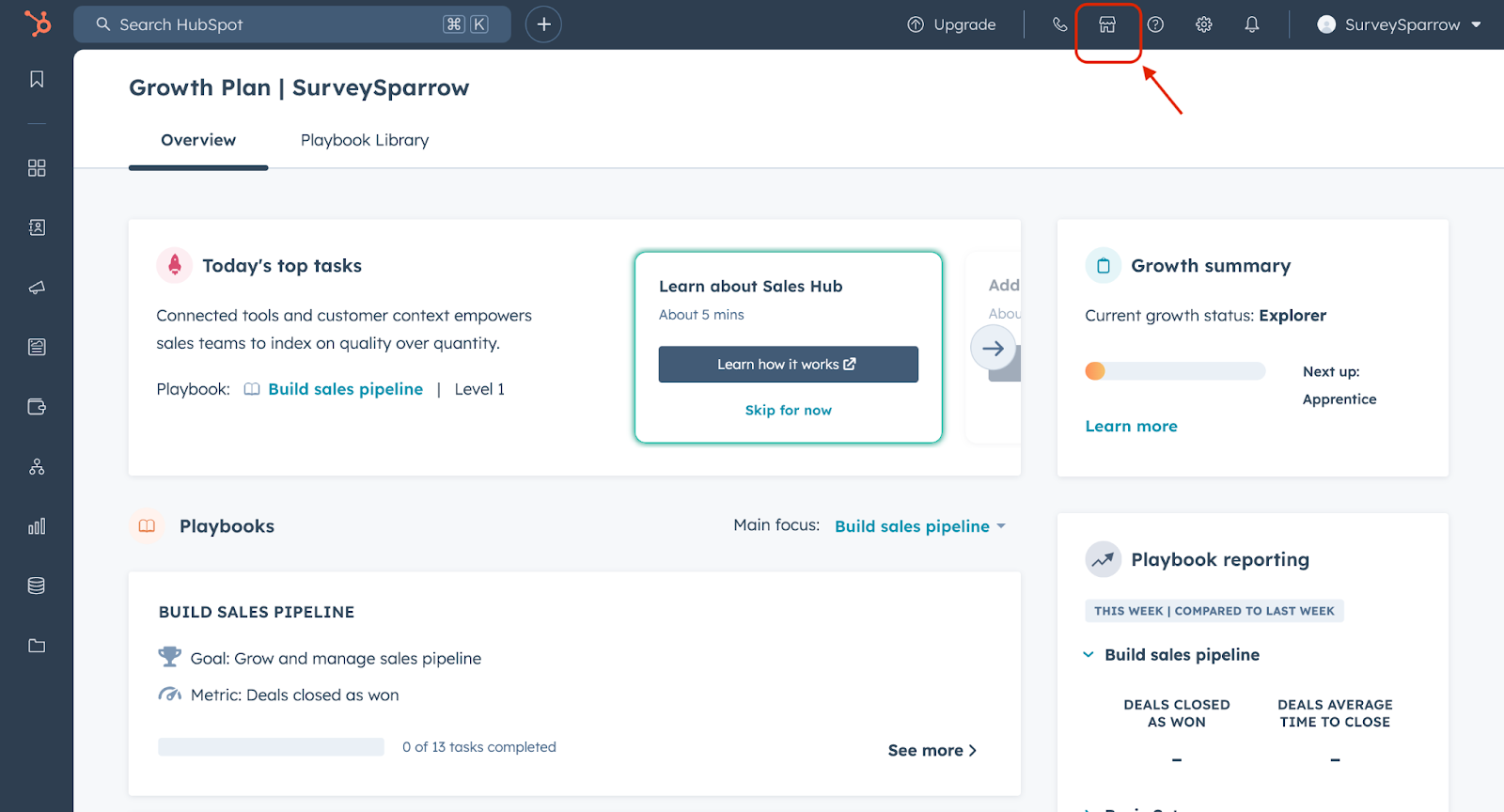
3. Click Connected Apps.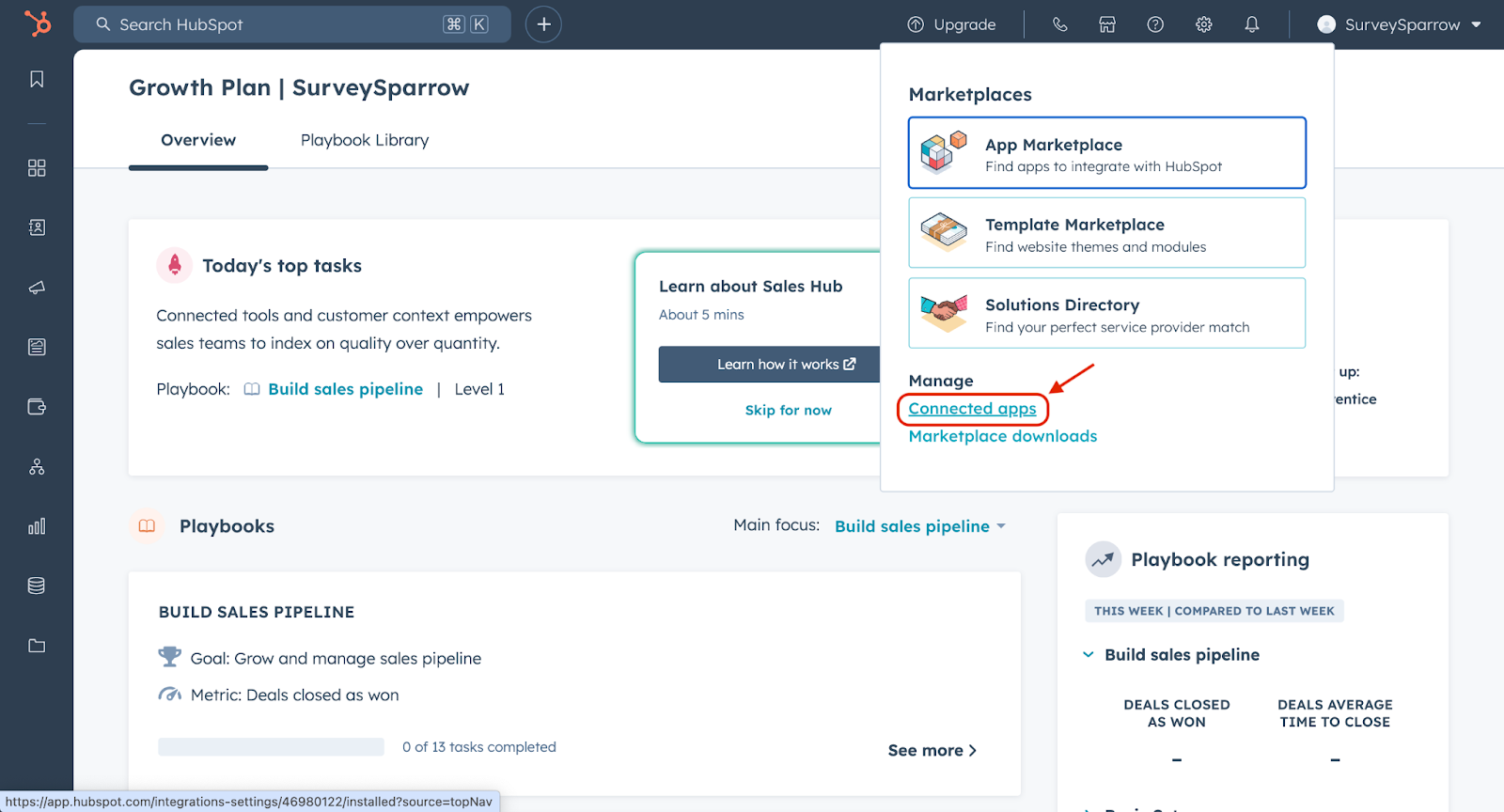
4. On the Connected Apps page, you can find the SurveySparrow account.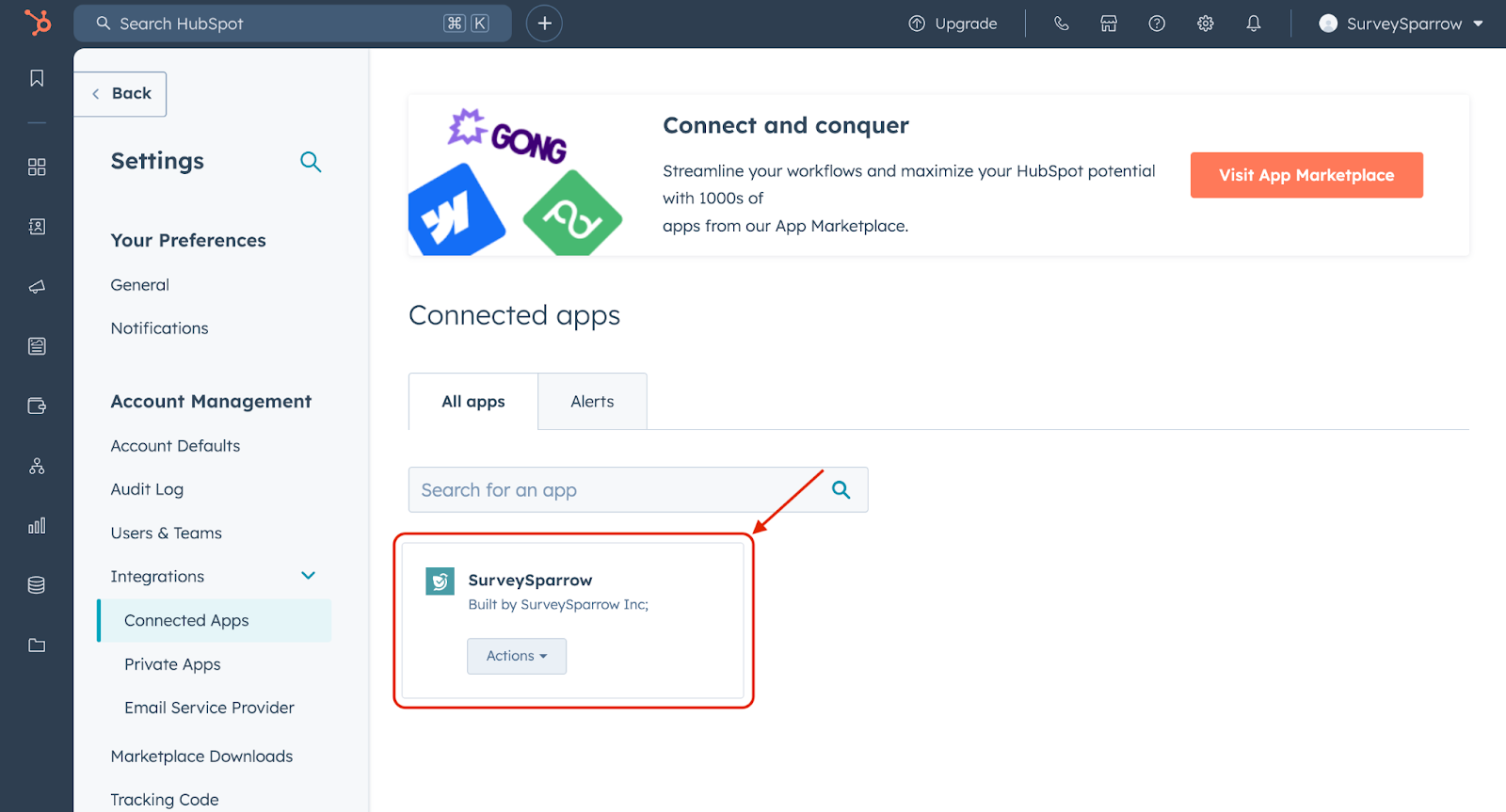
5. Click the Actions button.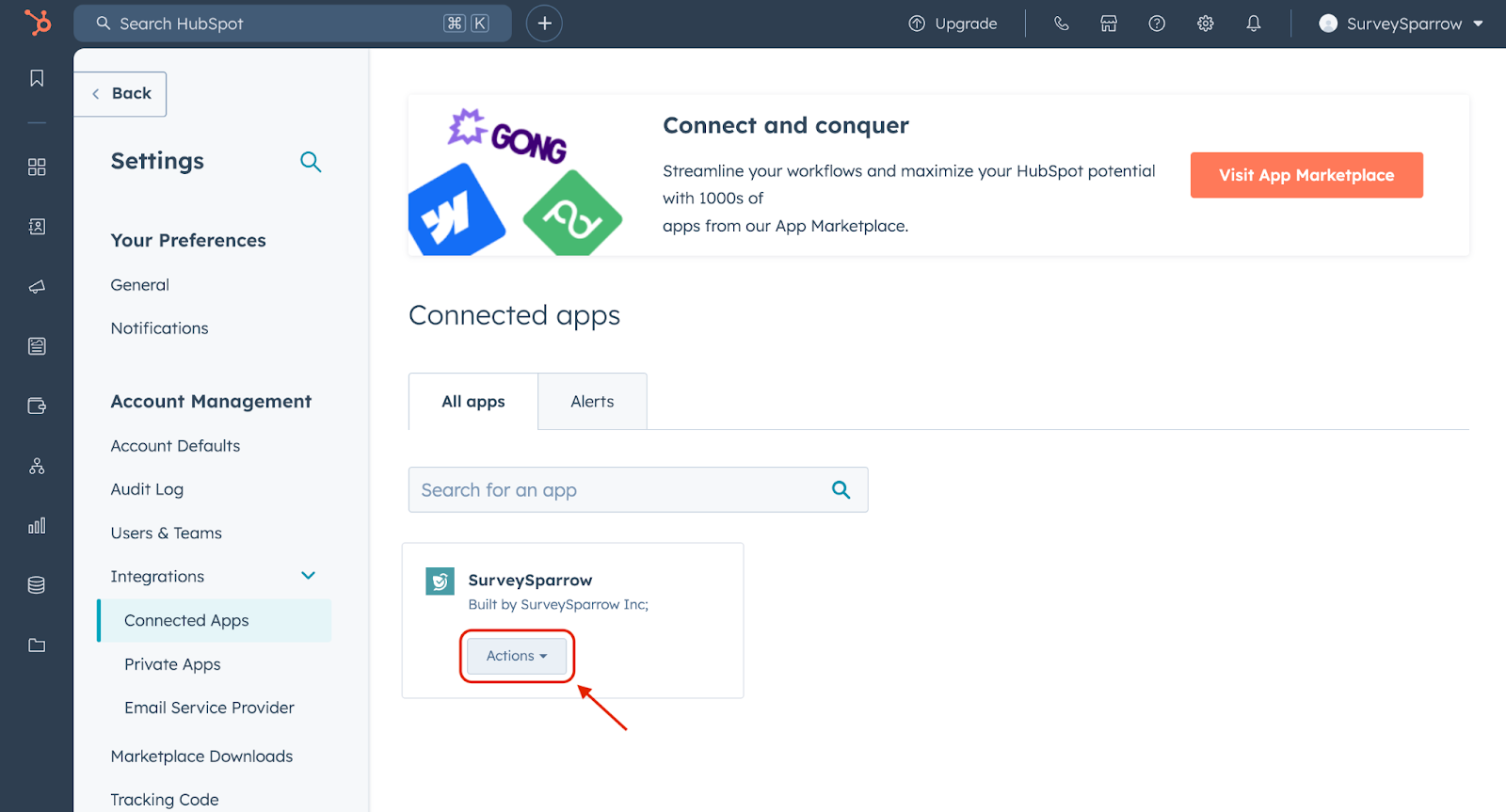
6. Click Uninstall.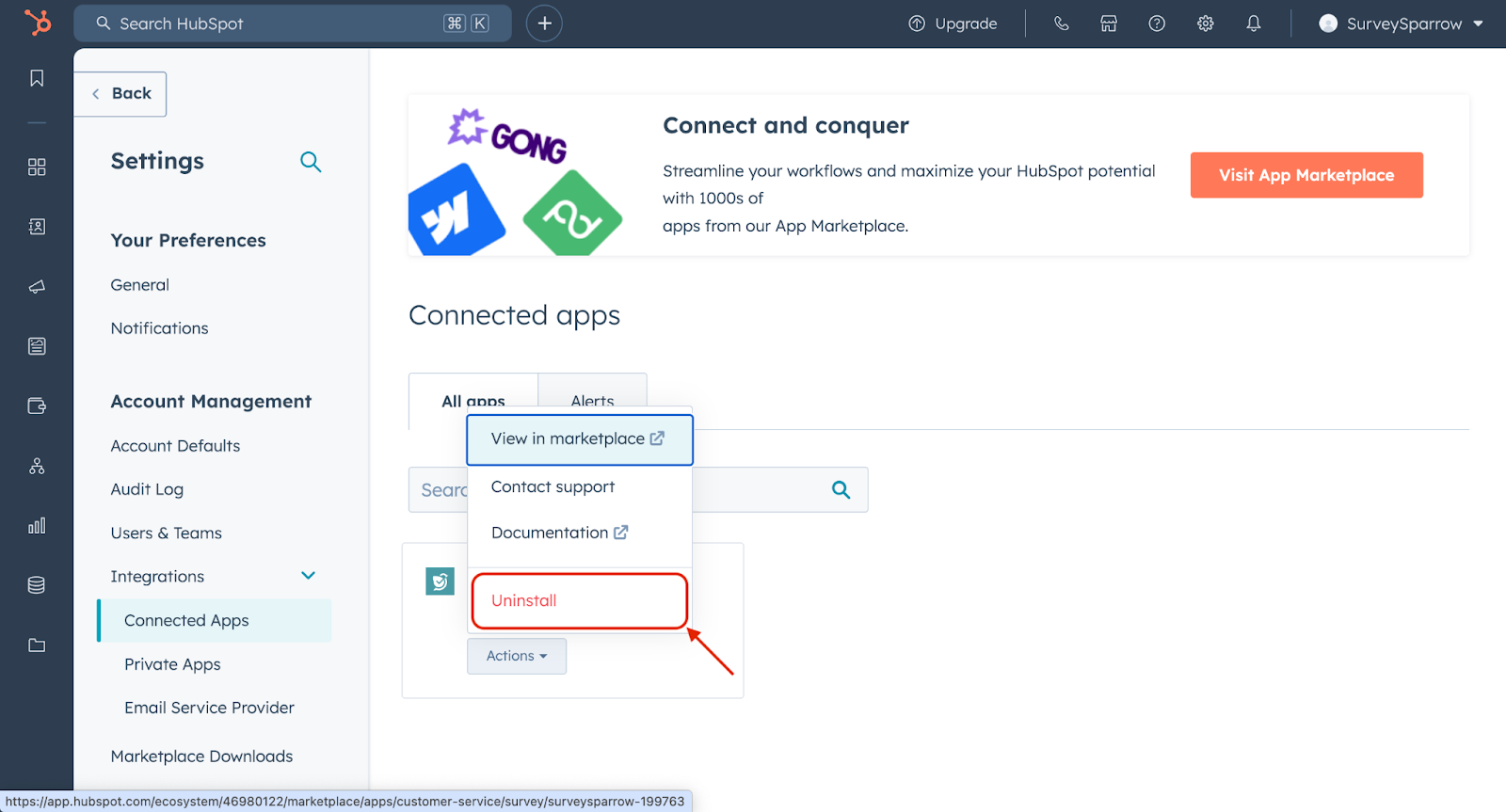
7. Type uninstall and select the same.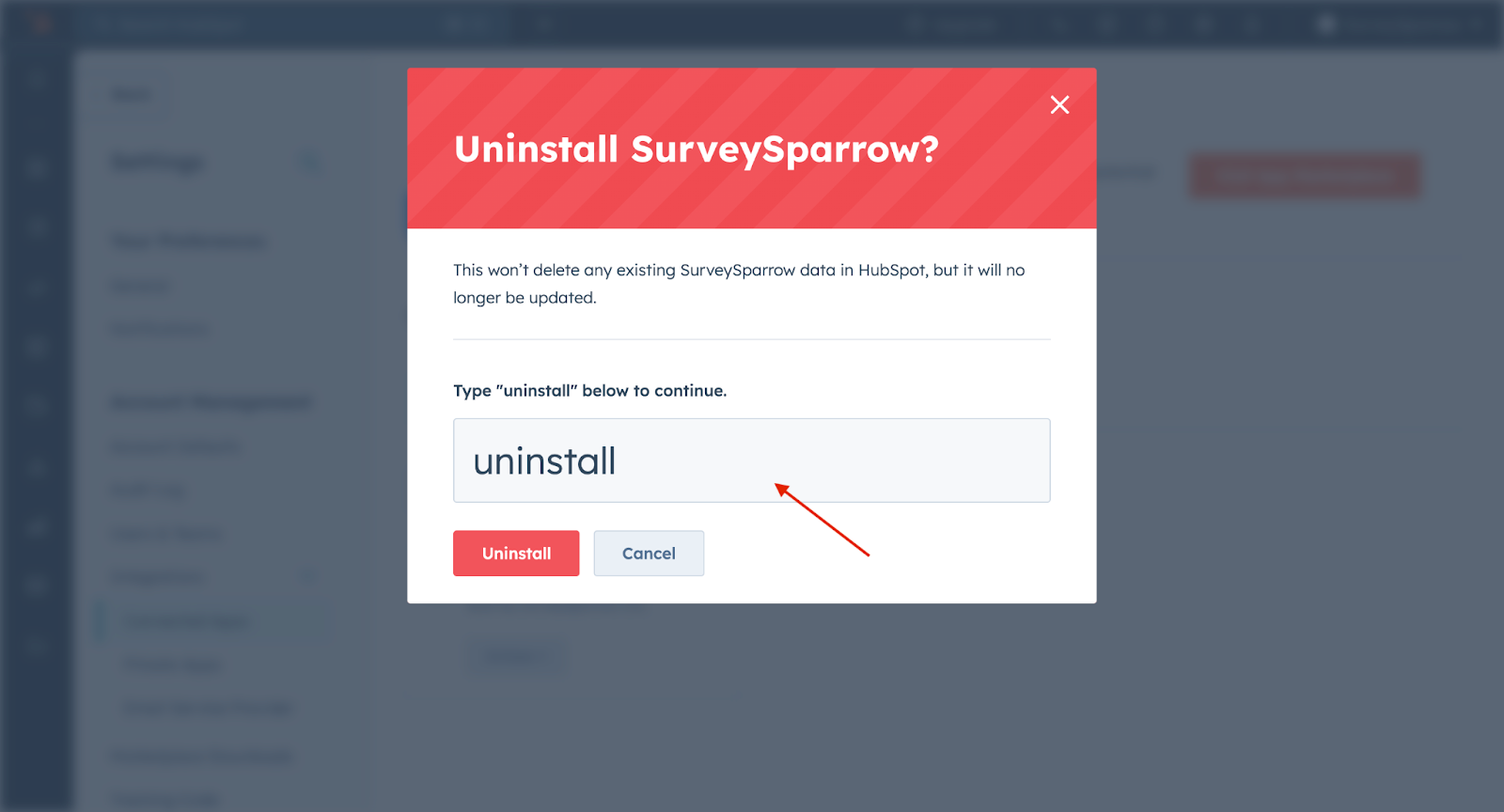
Your SurveySparrow account will now be uninstalled from the HubSpot integration.
Note: You can have multiple users within the same SurveySparrow account.
With this HubSpot-SurveySparrow integration, you now have the customer insights to power your marketing efforts and fuel your business success.
Feel free to reach out to our community if you have any queries.
Powered By SparrowDesk